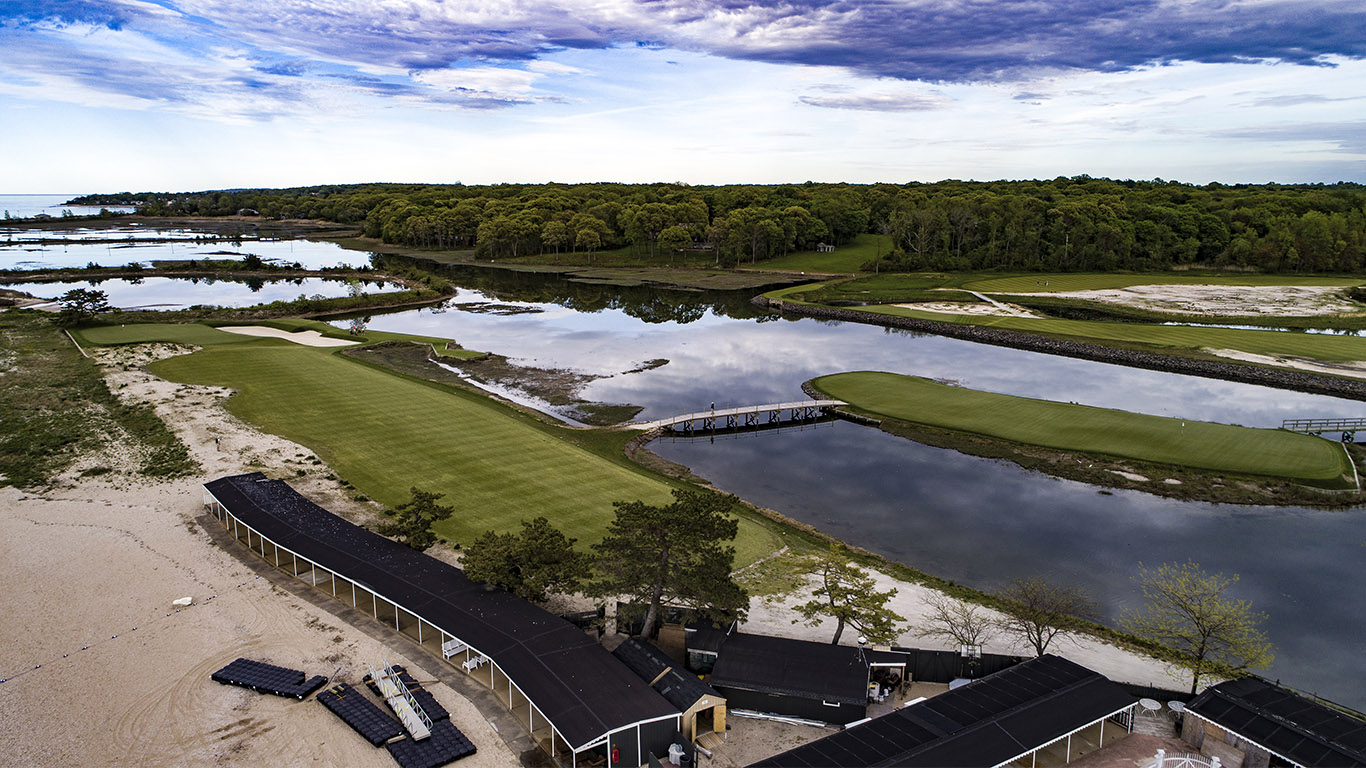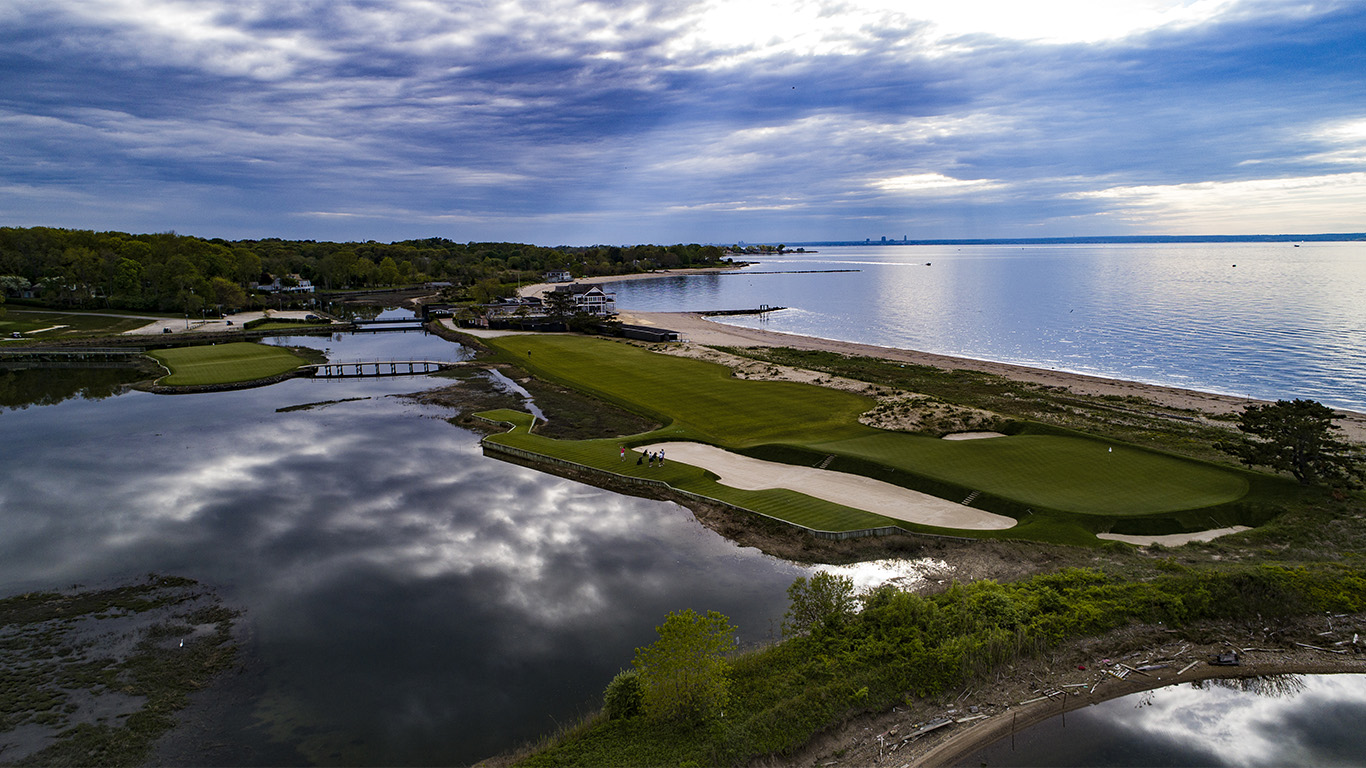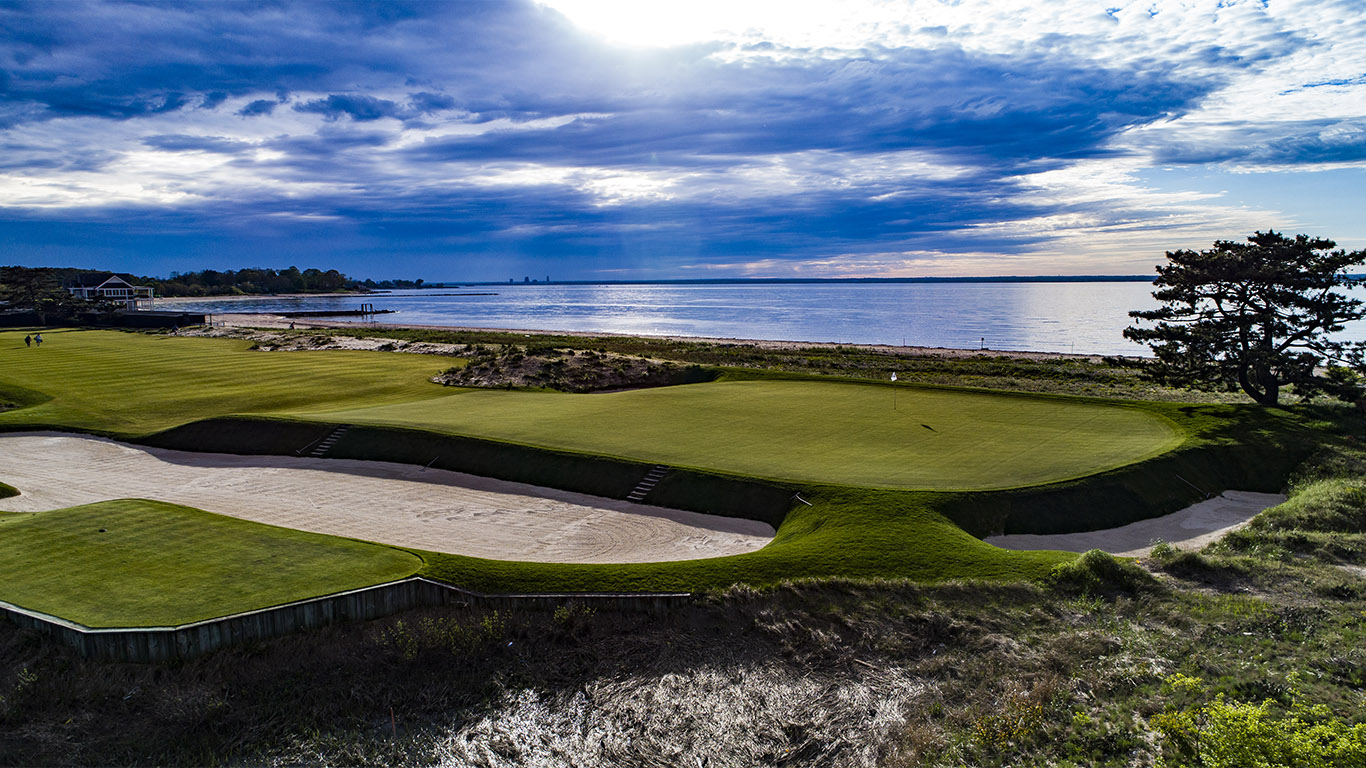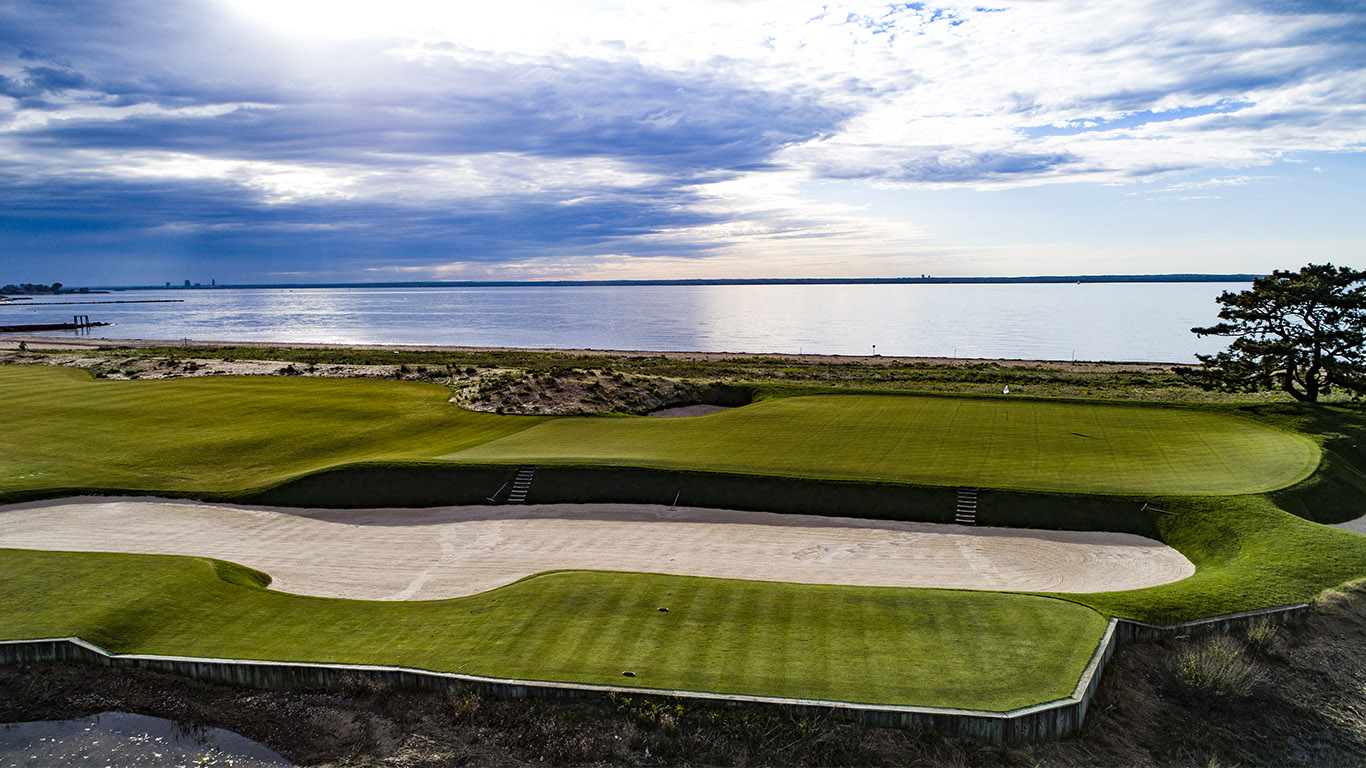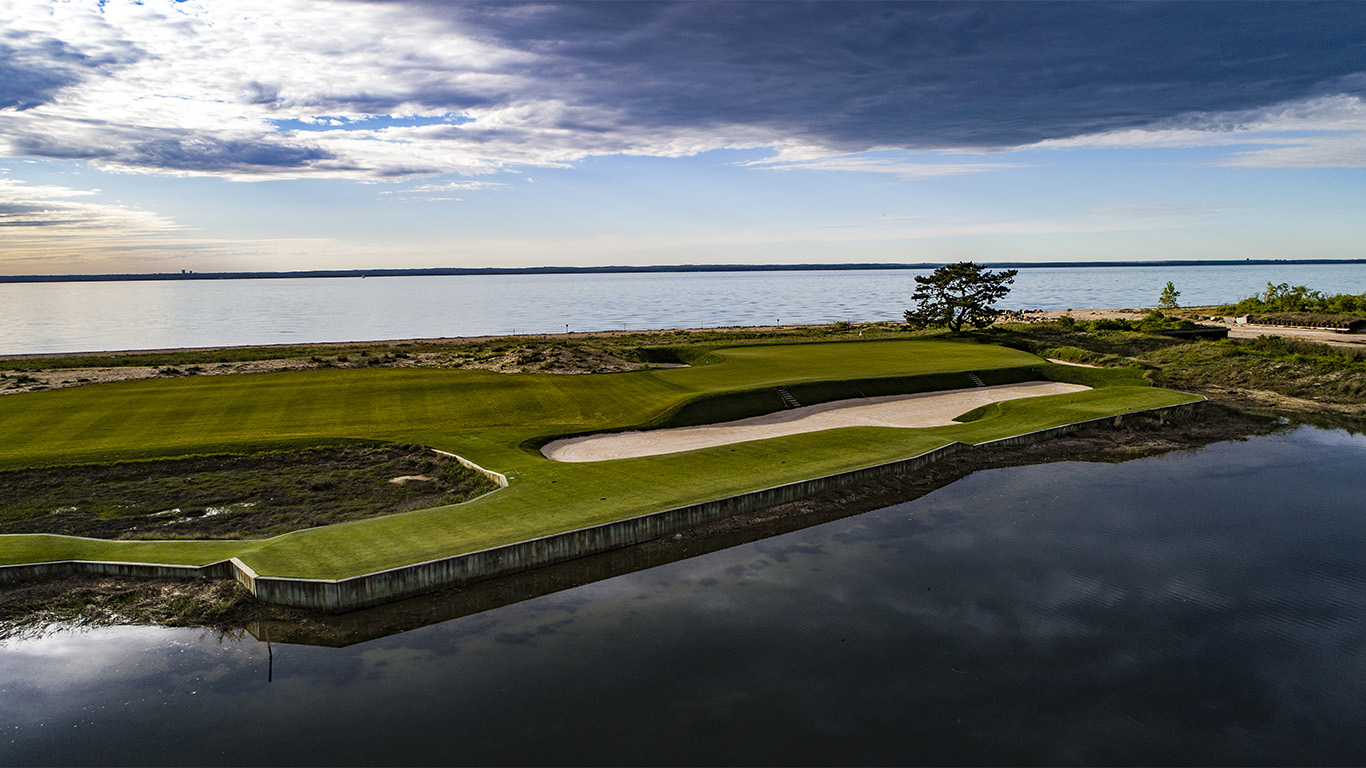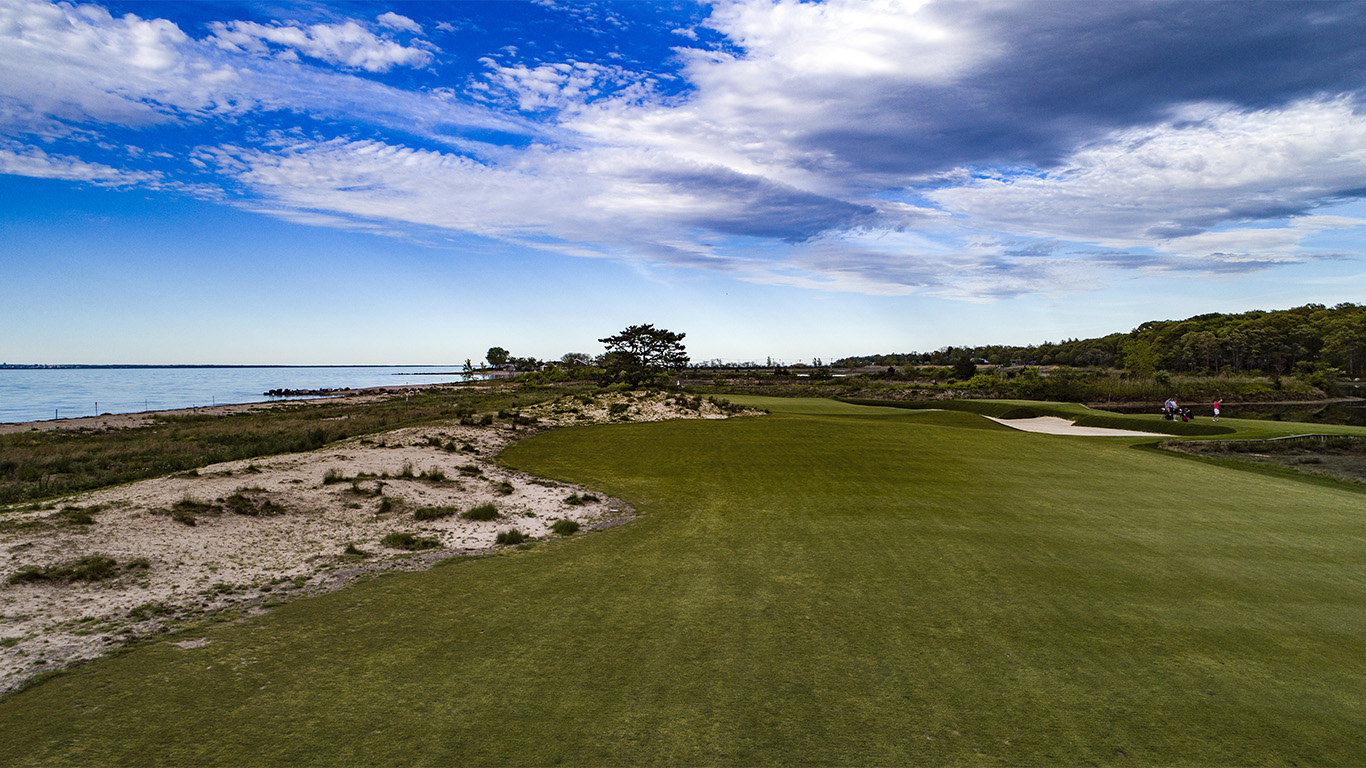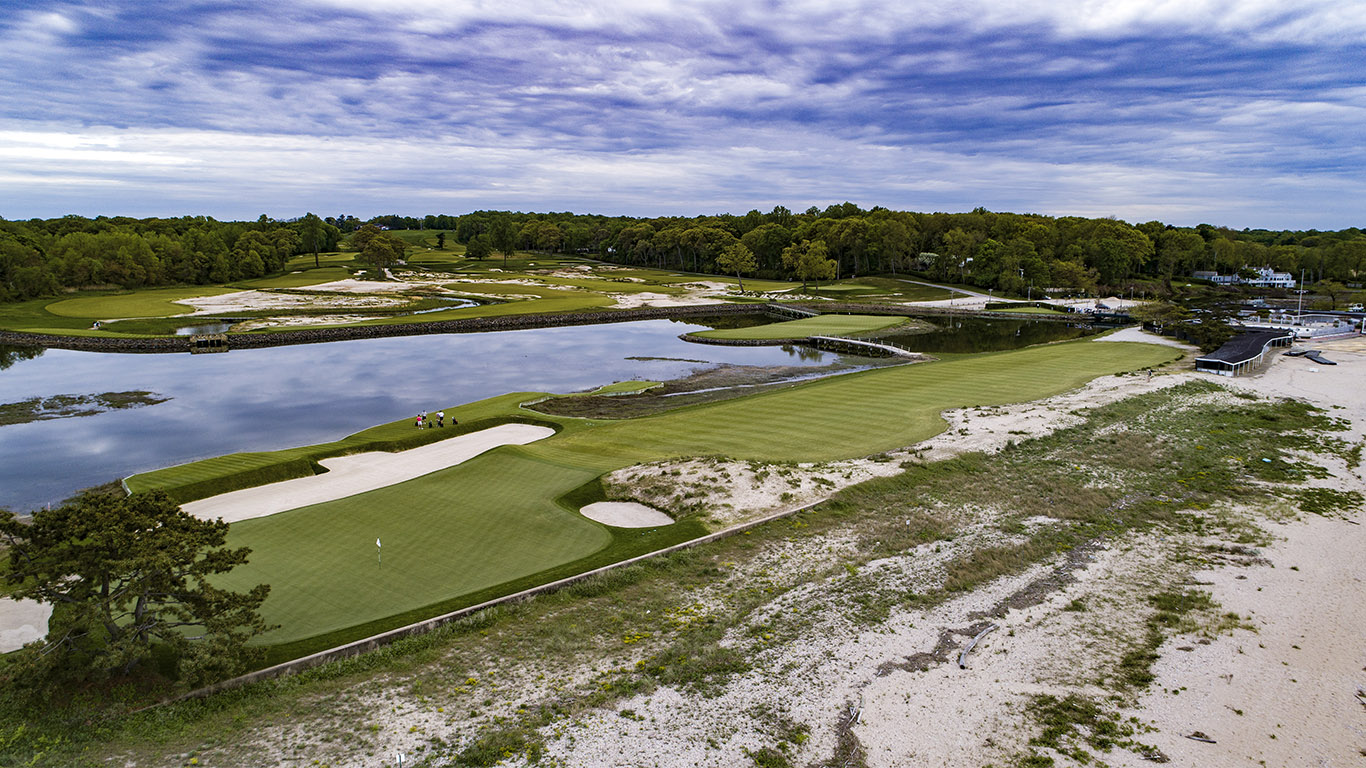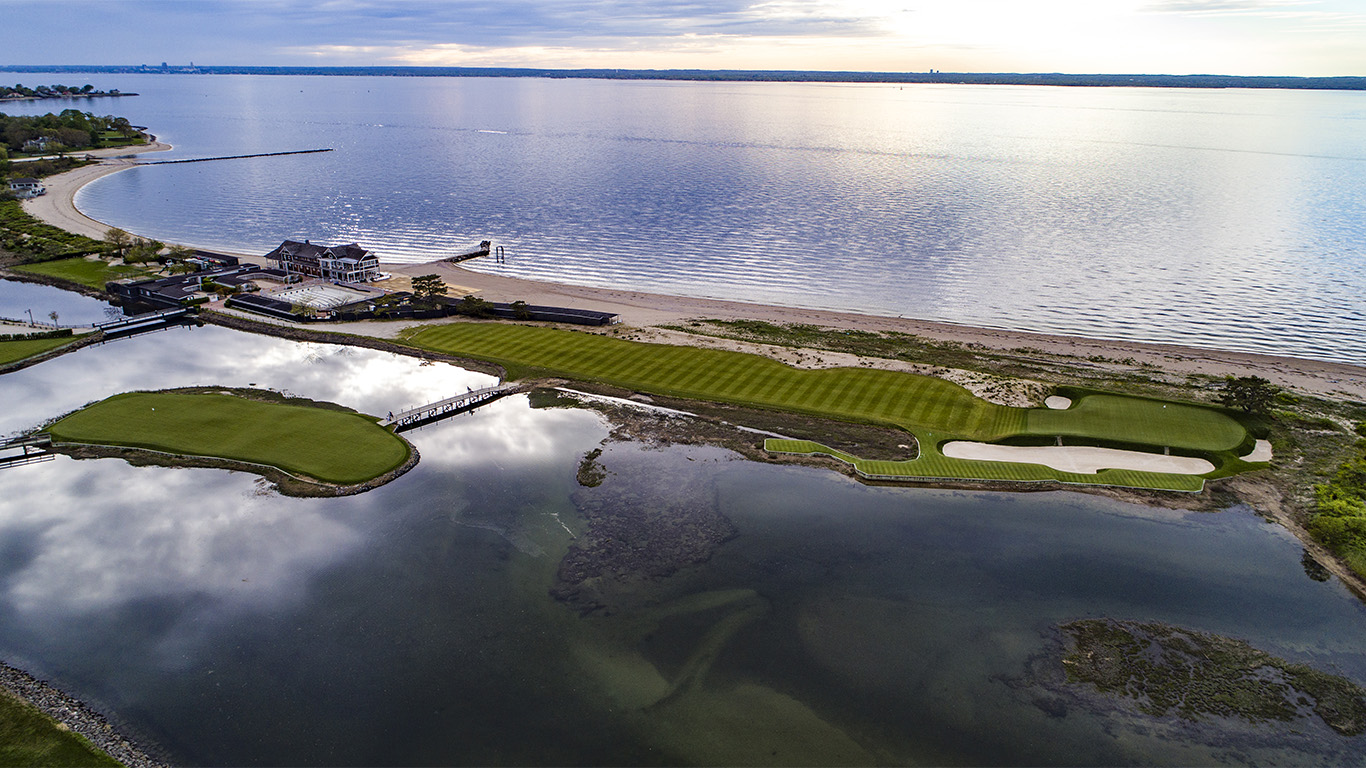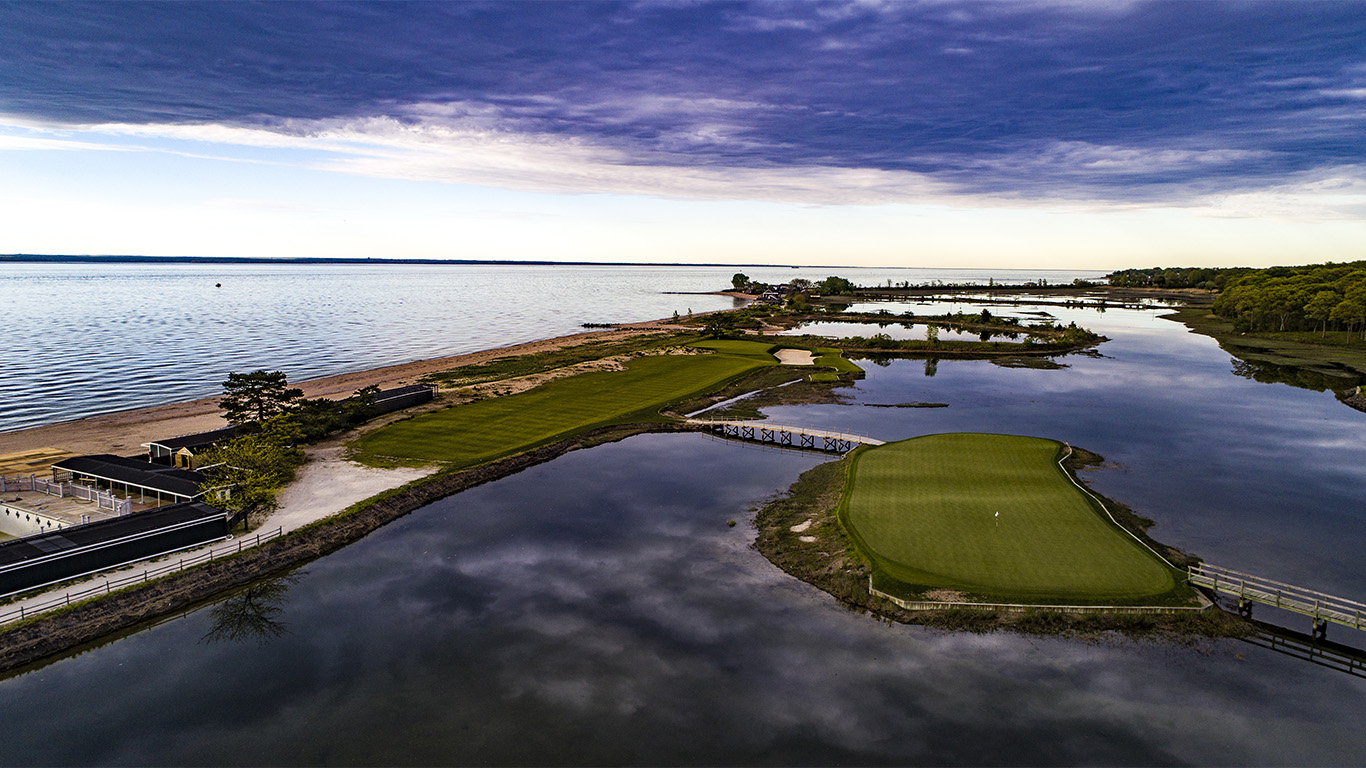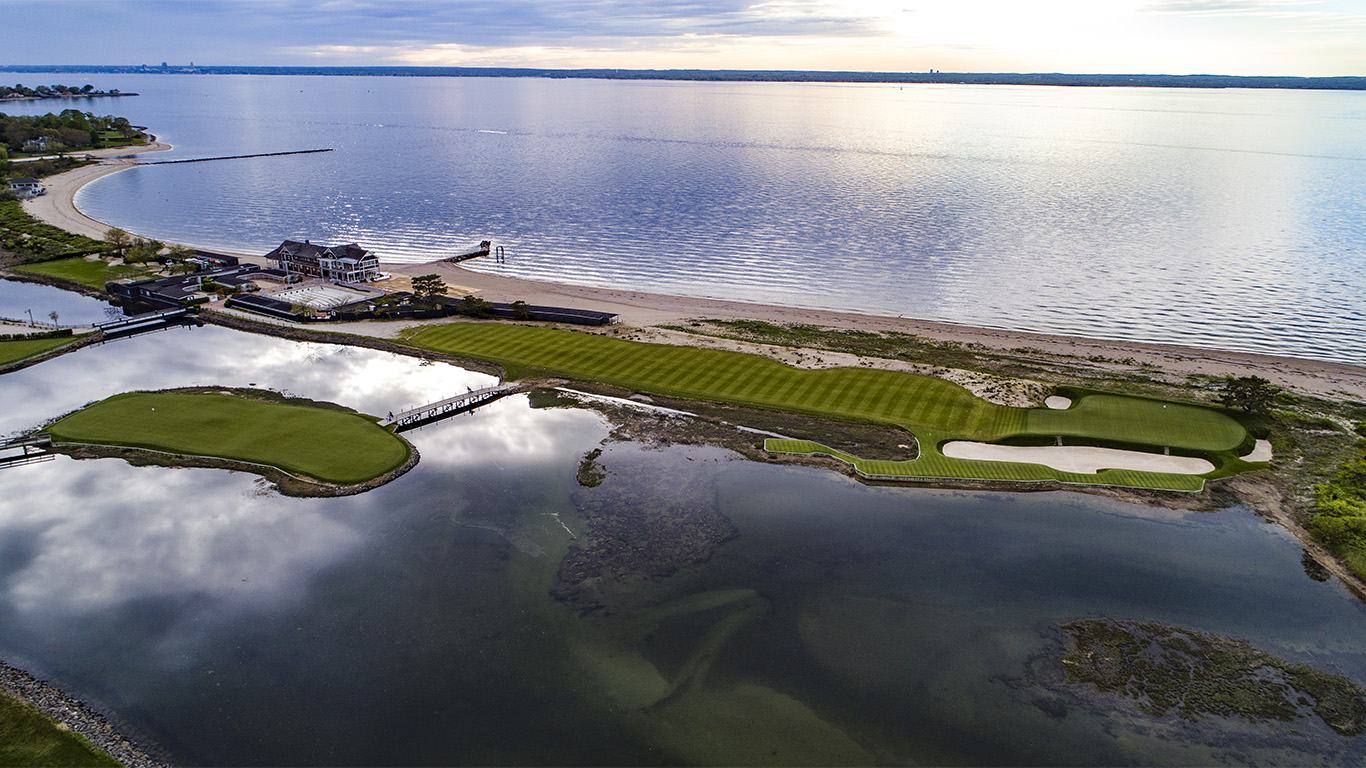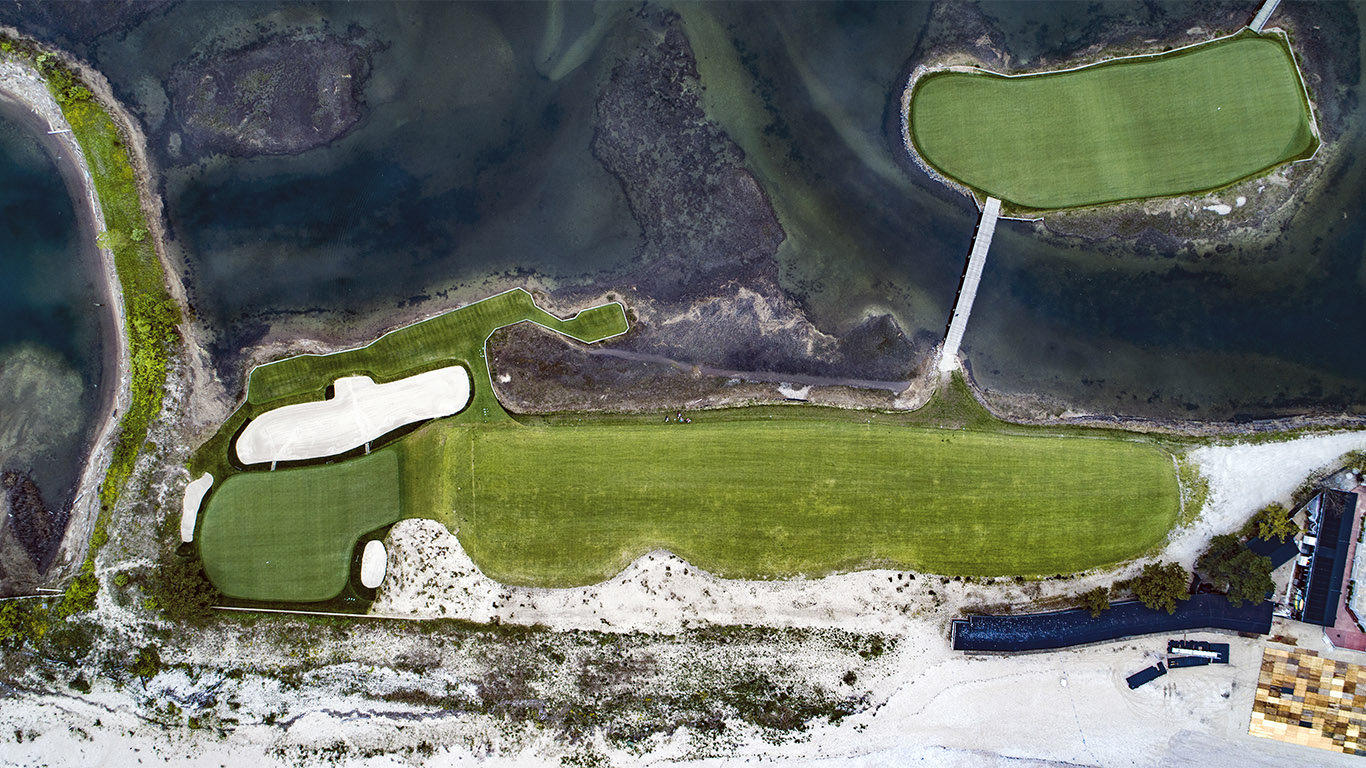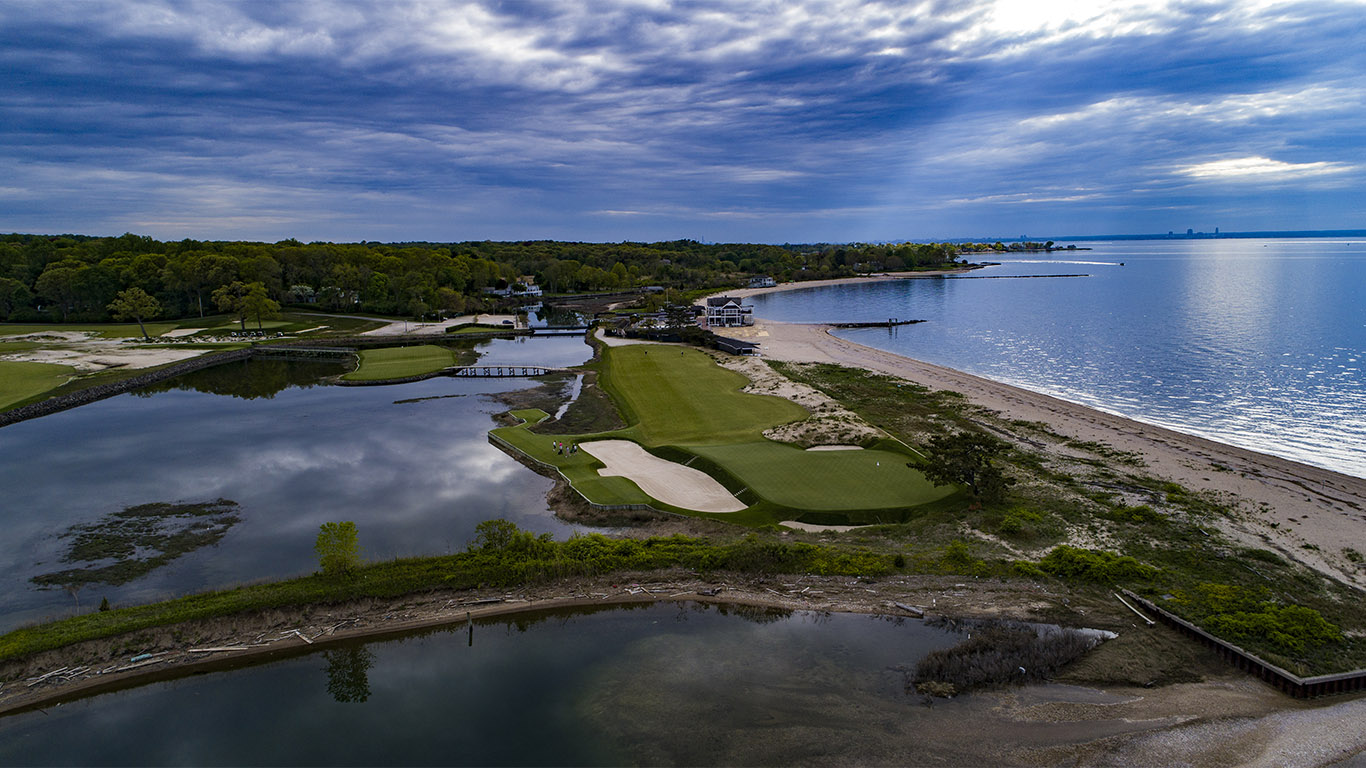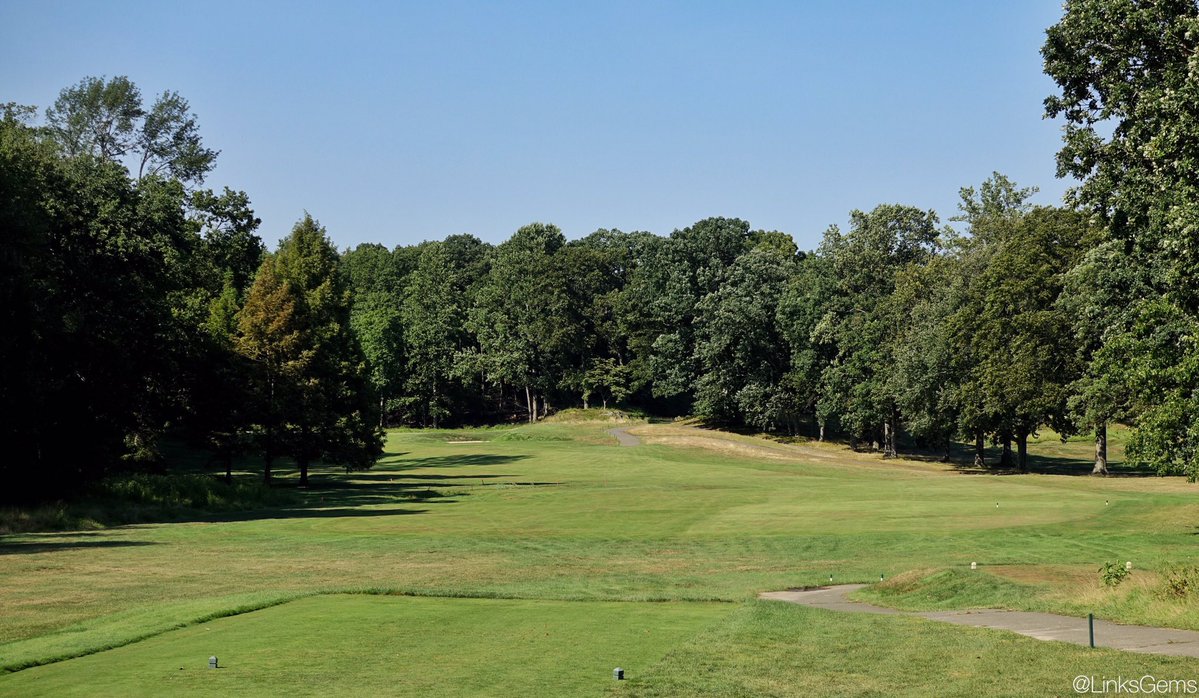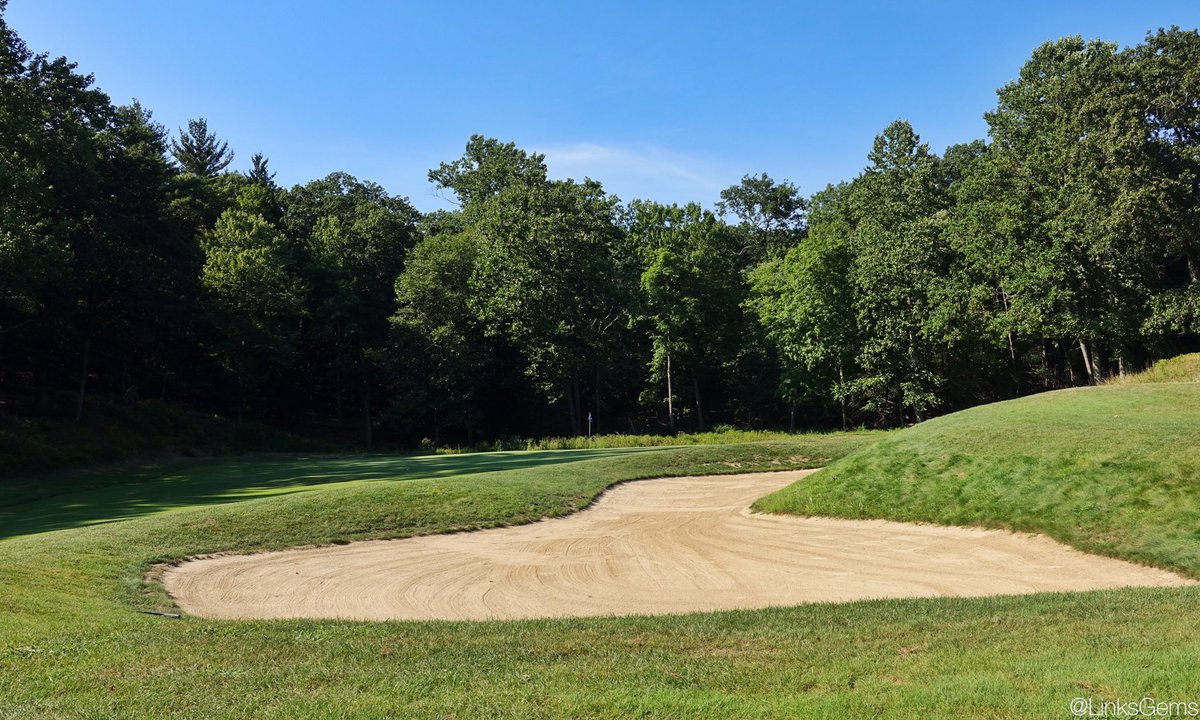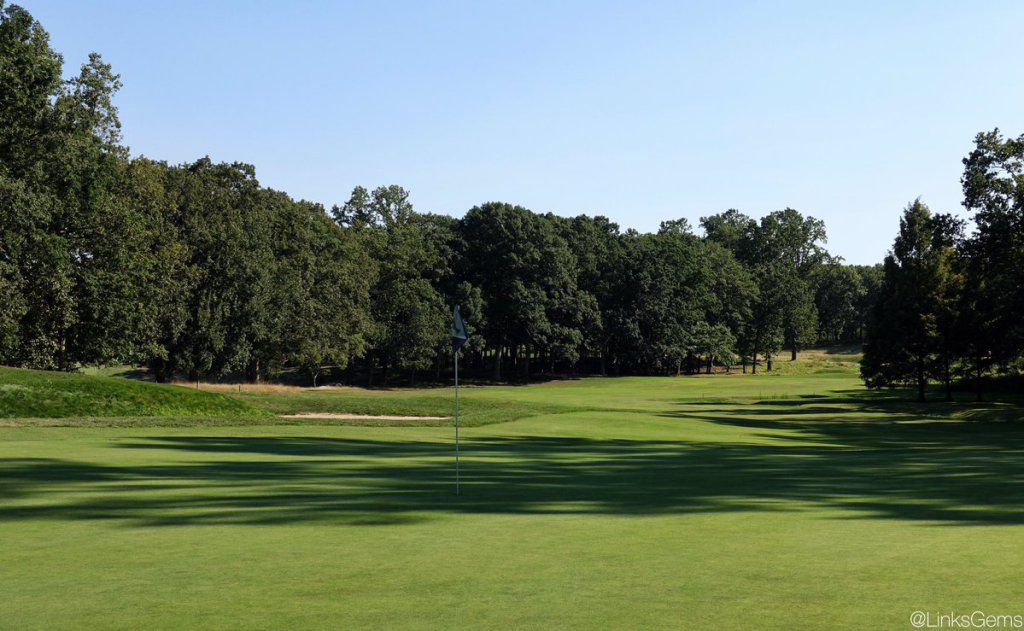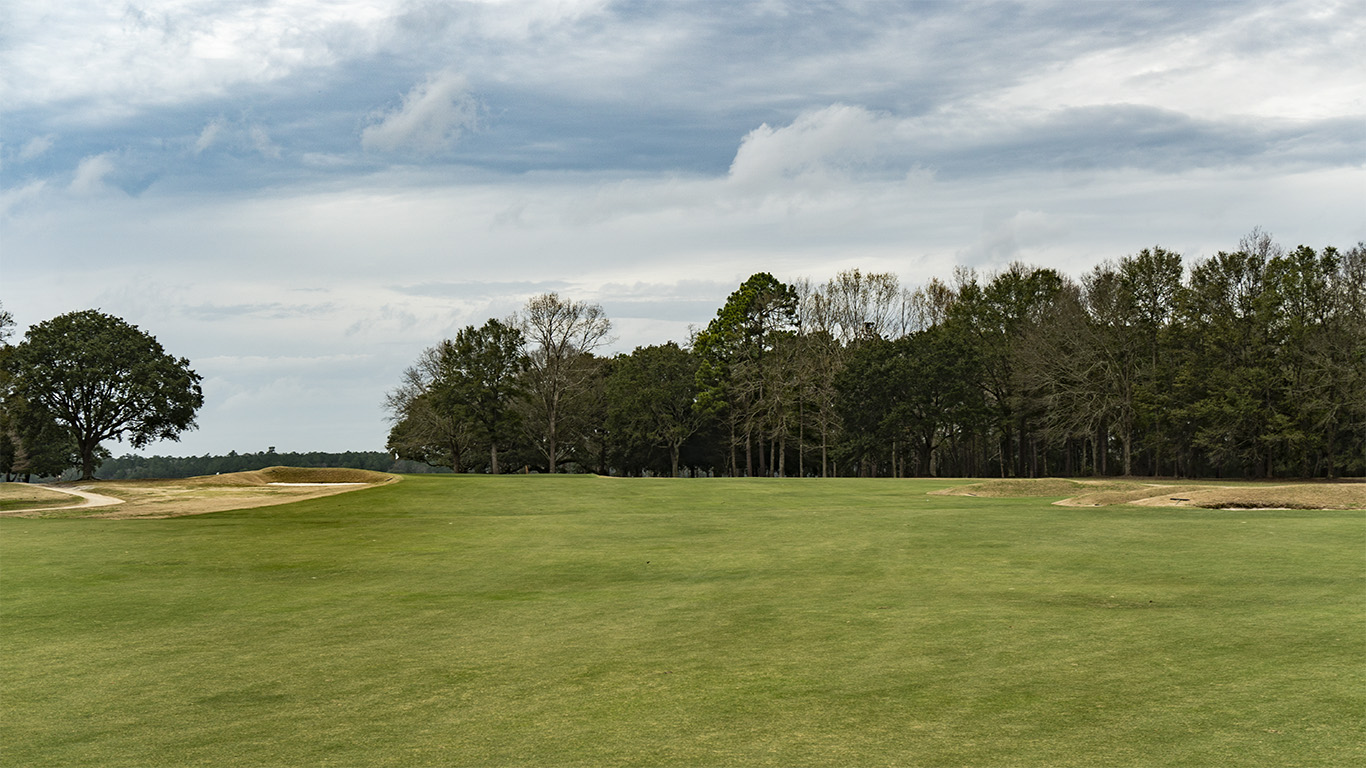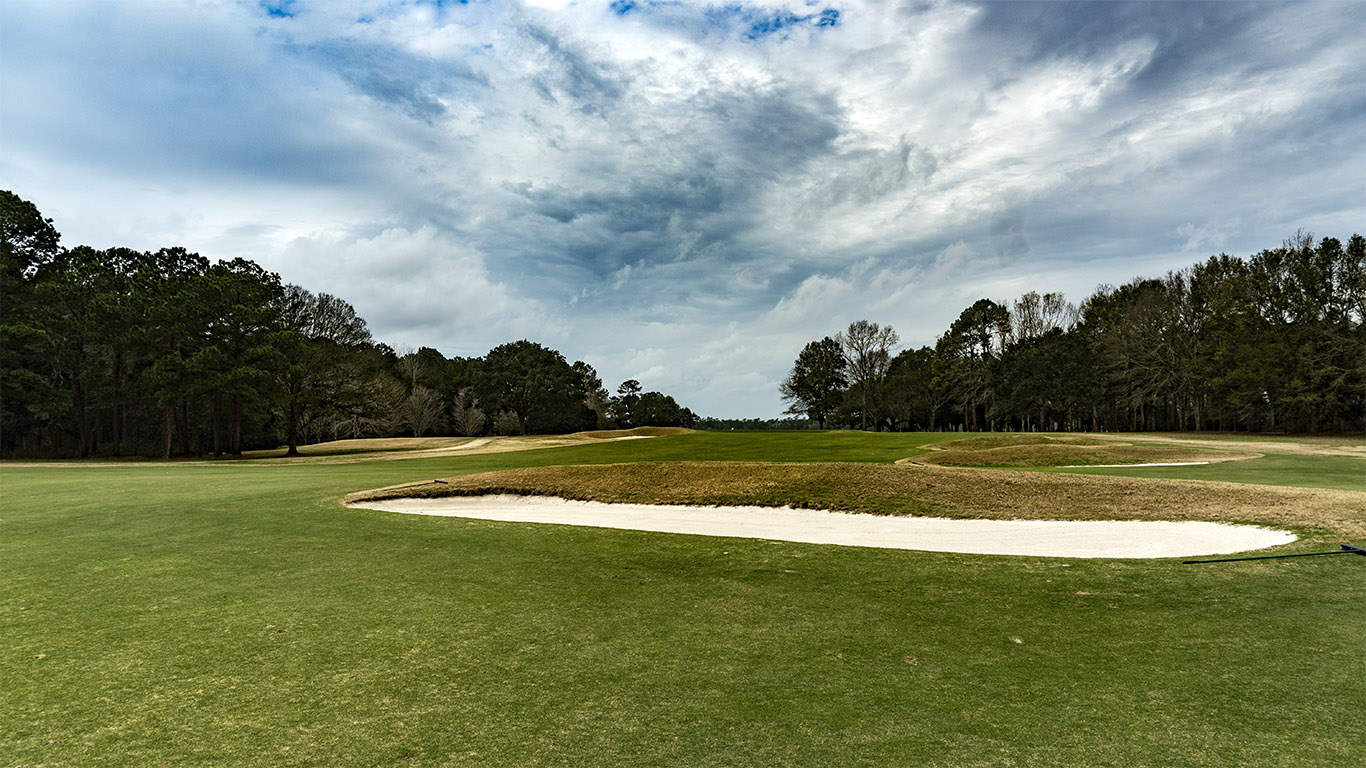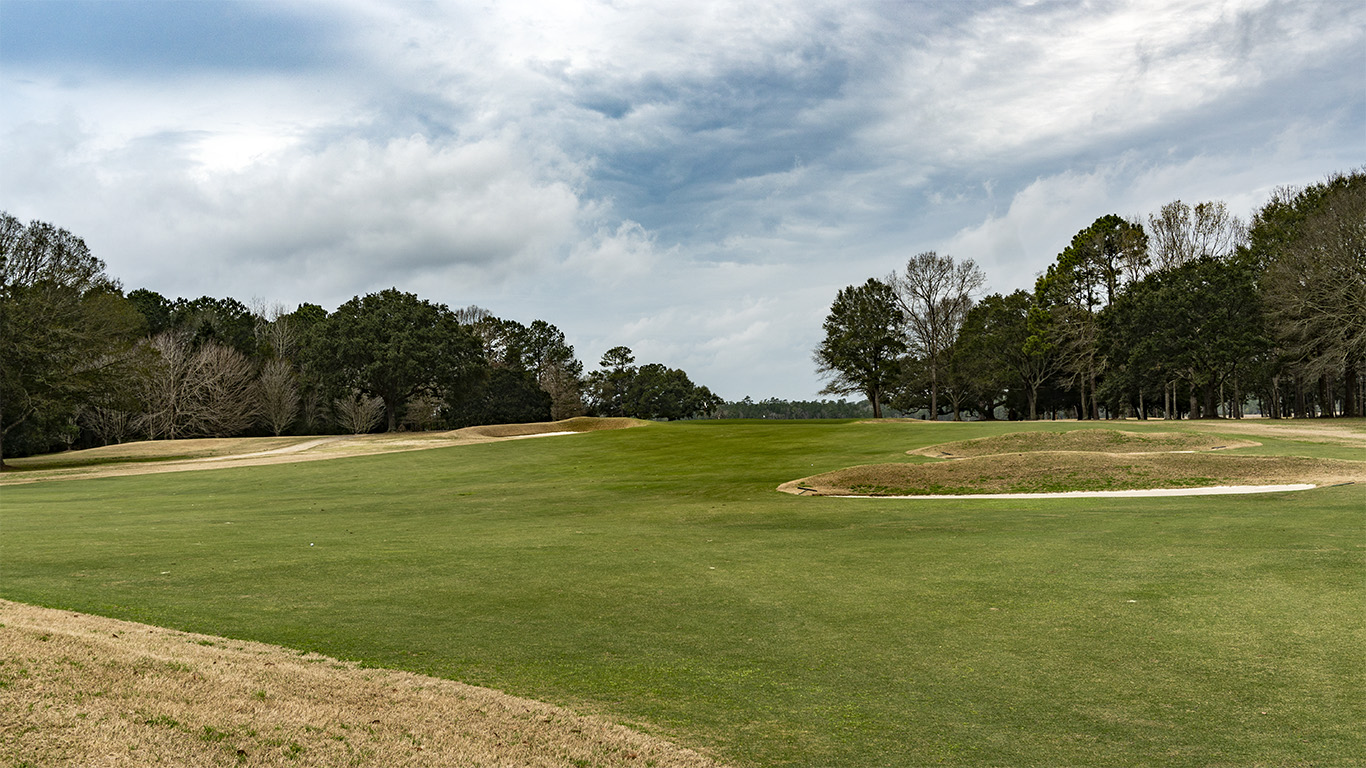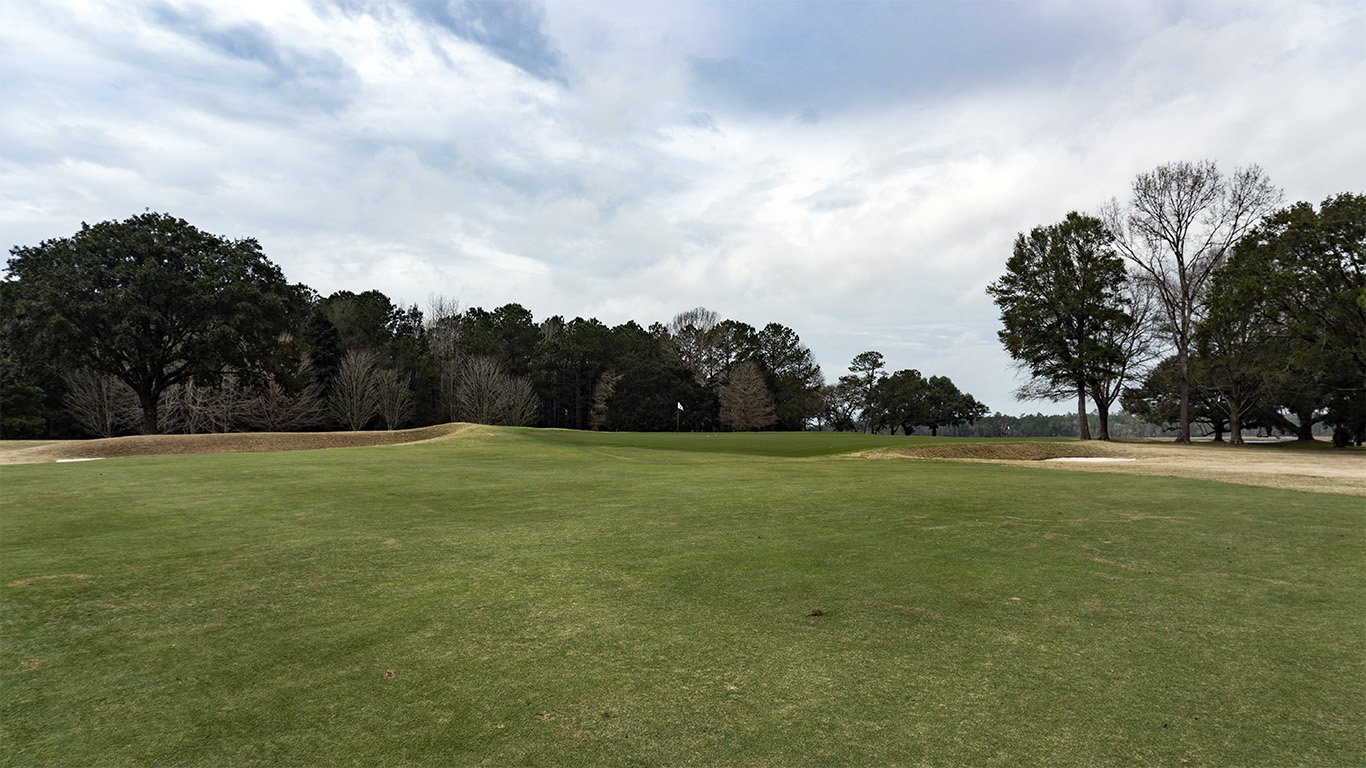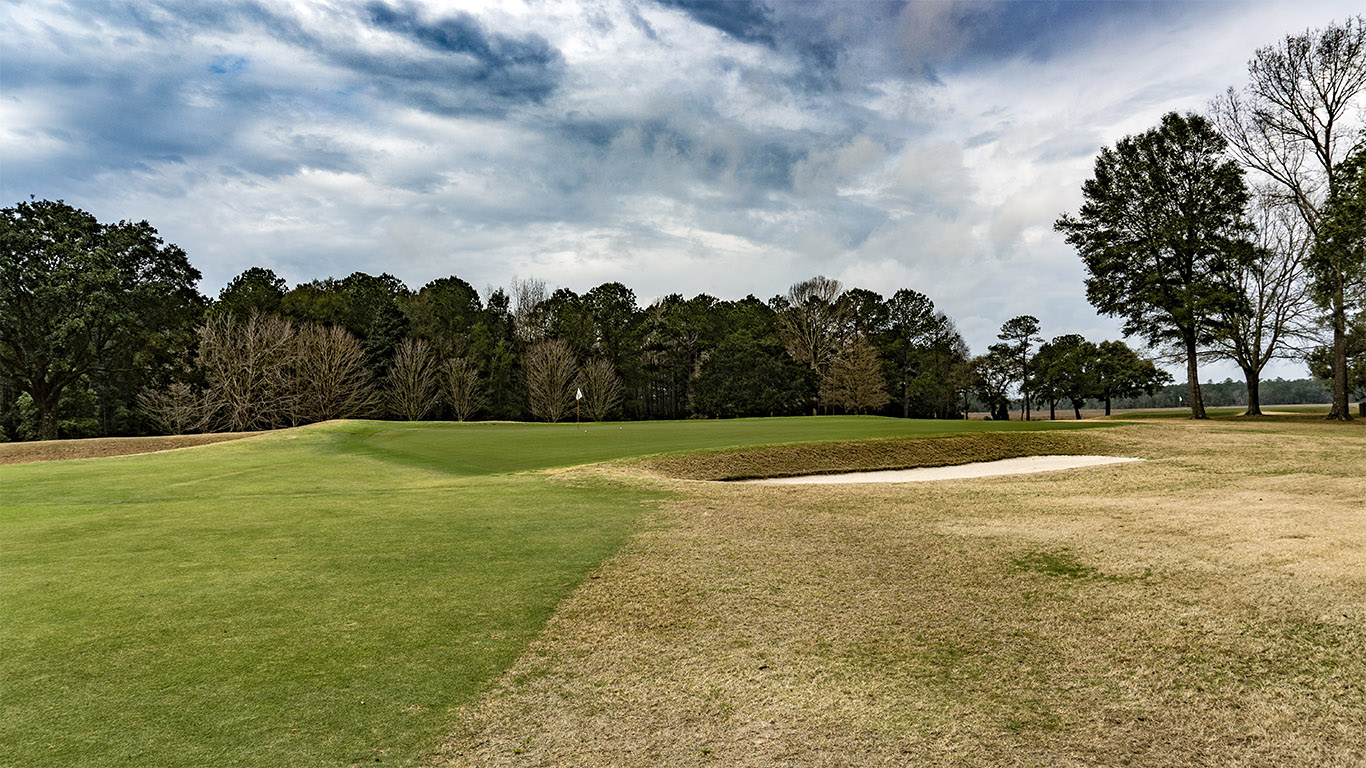Background
In an age when length is dominating the consciousness of the game, the Leven stands as a testament to strategic principles. Whenever employed, it is among the most fun templates to play.
To understand this template, a good place to start is with George Bahto’s wonderful book about the life and work of C.B. Macdonald, The Evangelist of Golf. In it, the Leven is described as follows:
“Leven is a short par 4, usually 330 to 360 yards. Fairway bunker or waste area challenges golfer to make a heroic carry for an open approach to the green. Less courageous line from the tee leaves golfer with a semi-blind approach over a high bunker or sand hill to the short side of the green. Usually a moderately undulating surface with least accessible cup placement behind sand hill.”
An opportunity to dive even deeper arose when Architect Brett Hochstein (@hochsteindesign) visited Lundin Links, where Macdonald found his inspiration for the template. Brett graciously contributed a terrific field report.
The Original – 16th at Lundin Links – 311 yards – Par 4
Charles Blair MacDonald’s inspiration for his “Leven” template can be traced back to Scotland’s southern Fife coast, where a long stretch of linksland joins the two towns of Leven and Lundin Links. Until 1909, the two towns and respective clubs shared 18 holes over the narrow strip of land known as the Innerleven Links. It was at that point that increased play and congestion led to the decision to add holes inland and create two separate 18 hole courses, one for each of the towns. What would later become known as the Leven template was actually on the Lundin Links side of the split and would permanently become the 16th hole (it was the 7th when starting from the Leven side of the links).
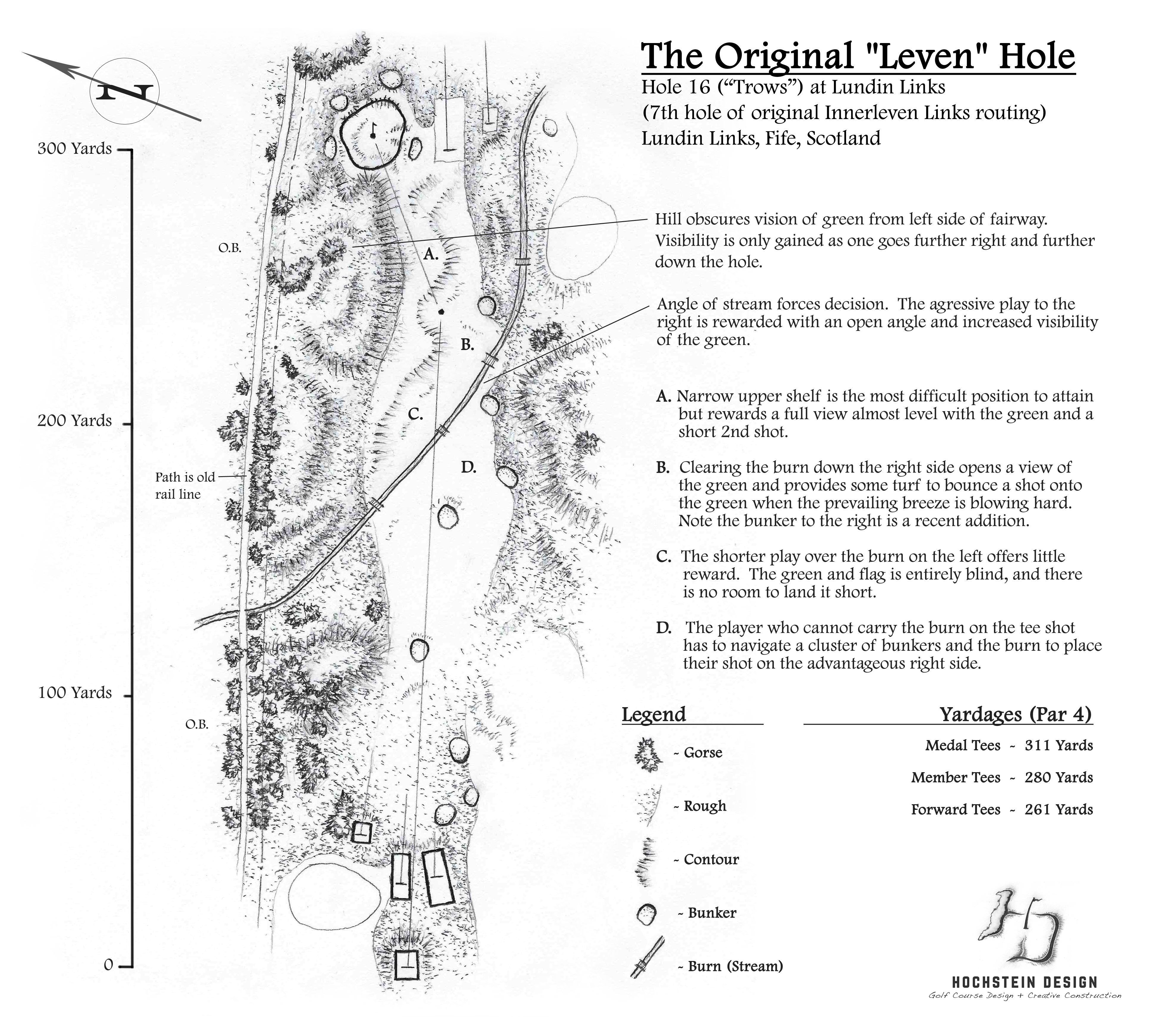
The original Leven, known to the Lundin Golf Club as “Trows,” is somewhat hard to figure out upon first sight. For starters, the green is barely visible behind a hill offset to the left, and only the top of the flag can be seen from the elevated medal (back) tees. From the left forward tees, it would not be out of question to think that the hole plays to the nearby 2nd green on the right. It is this blindness though, along with a burn (stream) running diagonally across the landing area, that give the hole its unique strategy that would be replicated numerous times by Macdonald, Seth Raynor, and others.

The view from the back tee on Lundin's 16th - Photo Credit: Brett Hochstein
The hole is not very long, especially by today’s standards, but it is all about placement of the tee shot. The hill that fronts the green causes two problems: discomfort with the lack of sight and a downslope covered in rough that will either snag short shots or kick them forward and through the green. The hill is slightly offset from the fairway though, which leaves a little opening from the right side where a ball could either bounce on or settle safely short. Generally, the further right and further down the hole you are, the more the green opens up and comes into sight, making the shot both easier and more comfortable. So, play it long and down the right side. Sounds simple enough, right? Of course, it wouldn’t be quite as interesting of a hole if just for that.

The 16th from above, with the burn cutting diagonally across - Photo Credit: Lundin Links
The aforementioned burn runs across the hole on a diagonal going from closer left to further right before curling up the right side of the length of the hole. This puts it much more in play around the ideal landing area, either punishing or rewarding the more aggressive play further down the right. A more conservative play short and left will result in a blind, often downwind shot over more of the grassy hill with no room to land the ball short.
For the shorter players laying up short of the burn, the approach or layup is a difficult one, as the fairway beyond the burn slopes left-to-right with the green sitting high and left. A well-played shot drawing into the slope will find a narrow upper plateau, and if long enough and properly shaped, may even find the green itself.
This narrow plateau is also the ideal landing area for the long hitter (excepting those 300 yard drivers who can just go after the green, which would be very tough to pull off but certainly fun to try). Getting to this plateau needs either a laser straight carry of about 220 yards or a helping draw played into the slope. Draw it too much though, and the left rough and hill is jail. Drift a little too far right and catch the slope, and the ball will kick down into the right rough while also bringing the right greenside bunker more into play.

Short of the green on the upper left fairway plateau - Photo Credit: Brett Hochstein
The green isn’t overly large and is defended by four bunkers that are almost evenly spaced around the perimeter. The right greenside bunker is the most important as it guards the right side entry and punishes players who go too long down the right side of the hole. The back and left bunkers prevent players from playing too safely over the hill. They actually sit a little bit above the green, which makes for an awkward and difficult to control recovery shot. The putting surface itself is not overly wild but has some nice internal variation to keep things interesting. It has a slight overall right-to-left slope as well, which gives a little help for those trying to navigate around the front hill to find a left hole location.

From the green looking back over the fronting mound - Photo Credit: Brett Hochstein
The 16th at Lundin is a very clever and simple hole utilizing two natural features in perfect harmony. It is no wonder Macdonald used this hole to inspire one of the more interesting holes at the highly strategic National Golf Links, the short 17th named “Peconic.”
This is a great hole and one that would be fun to play on a daily basis, especially during a dry summer with a trailing wind, both of which would make the hill fronting the green exponentially more difficult to navigate. Even when calm, the hole’s short length is offset by the burn, sloping fairway, and bunkers, which all make the ideal second shot landing areas effectively small and difficult to find. Play aggressively, and a punishment is likely. It is vexing on its own, but coupling that with the variable and often strong Scottish wind leaves you with a hole where you are very happy to run away with a 4.
Restraint and thought are two skills not often tested enough in golf, especially in modern design. The 16th at Lundin Links tests both, and that is its greatest quality.
National Golf Links of America – 17th – 375 yards
Macdonald’s Leven at NGLA, named Peconic, is his most famous and perhaps most scenic. The hole plays downhill and angles left-to-right. The fronting mound is exposed sand and hides a set of nasty pot bunkers. Modern technology has taken a bit of the bite out of the 17th as the aggressive line up the left doesn’t present the same challenge as it used to.
-
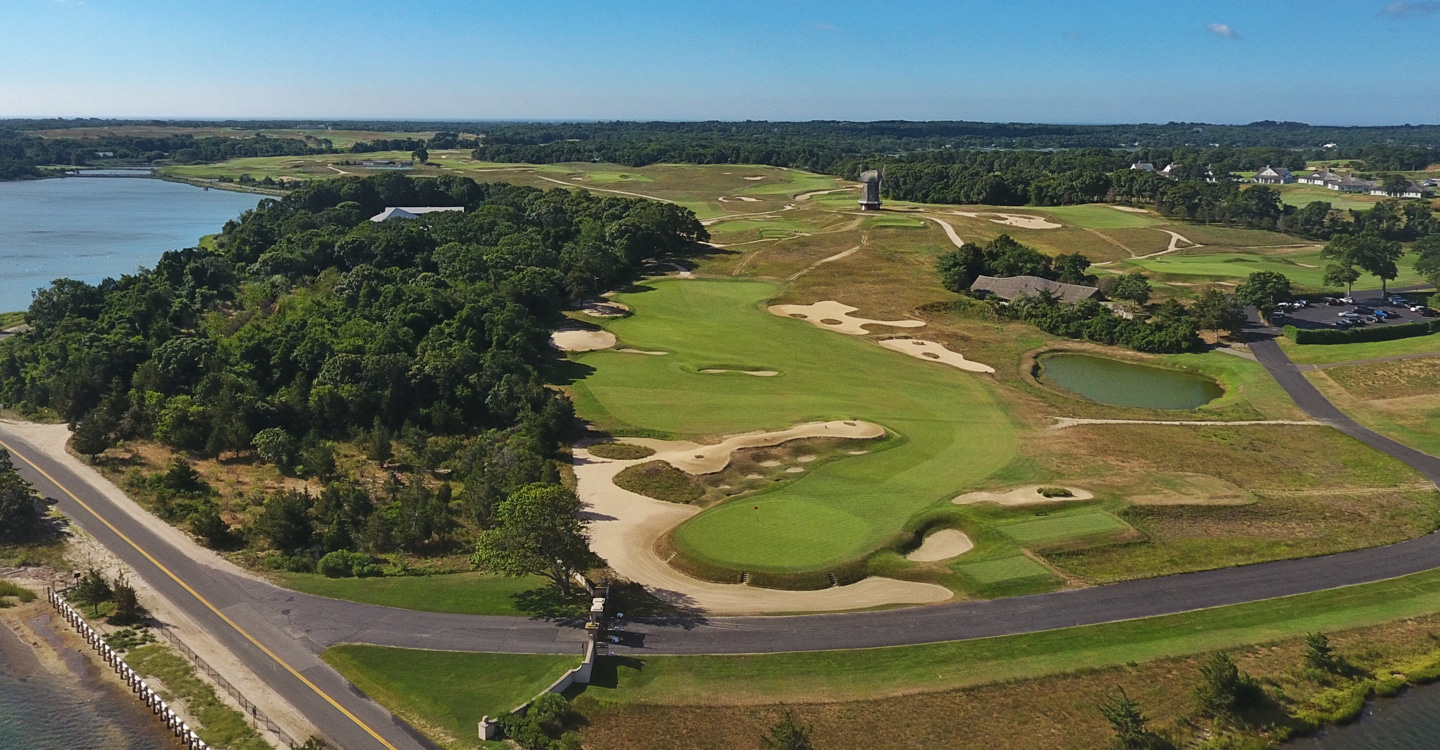
What a sight to see for arriving visitors Photo Credit: Jon Cavalier
-
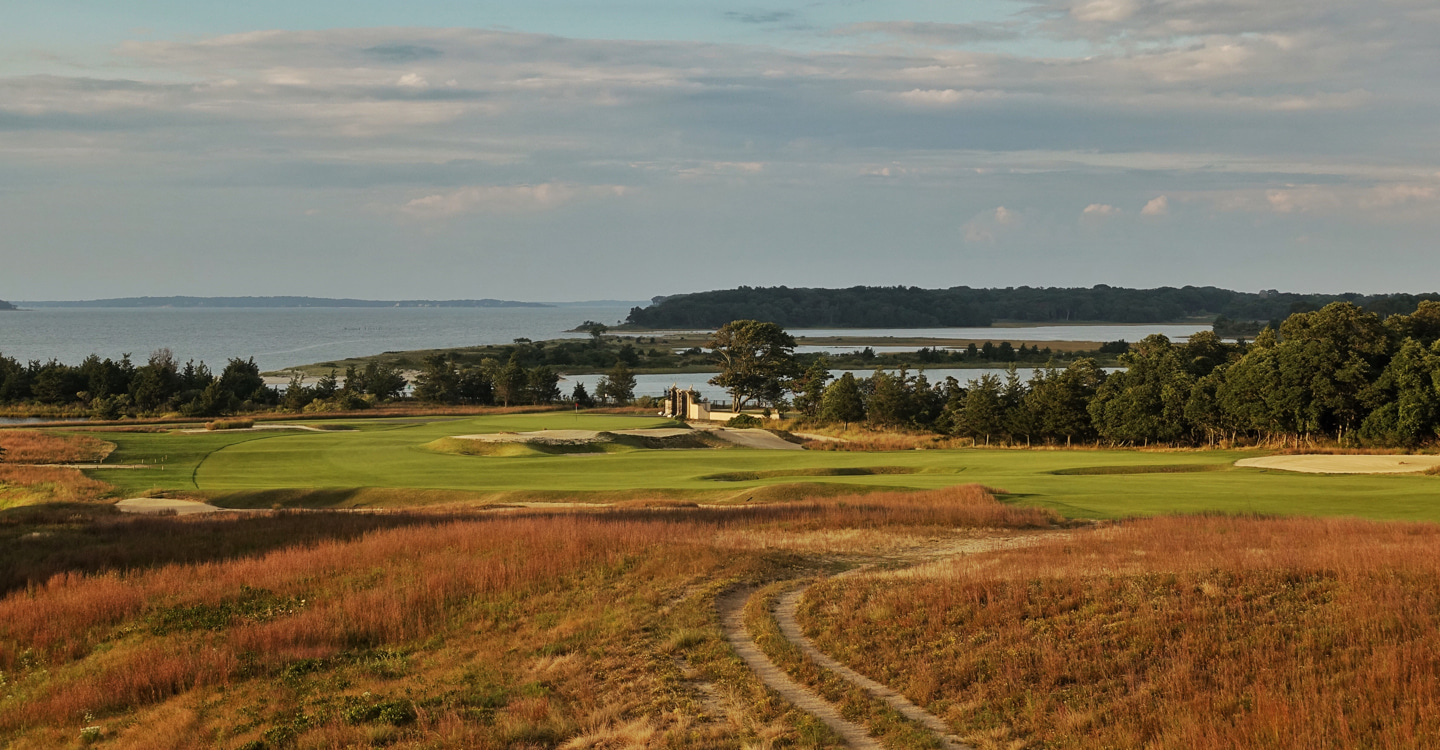
Multiple strategic options for the player on the tee
-
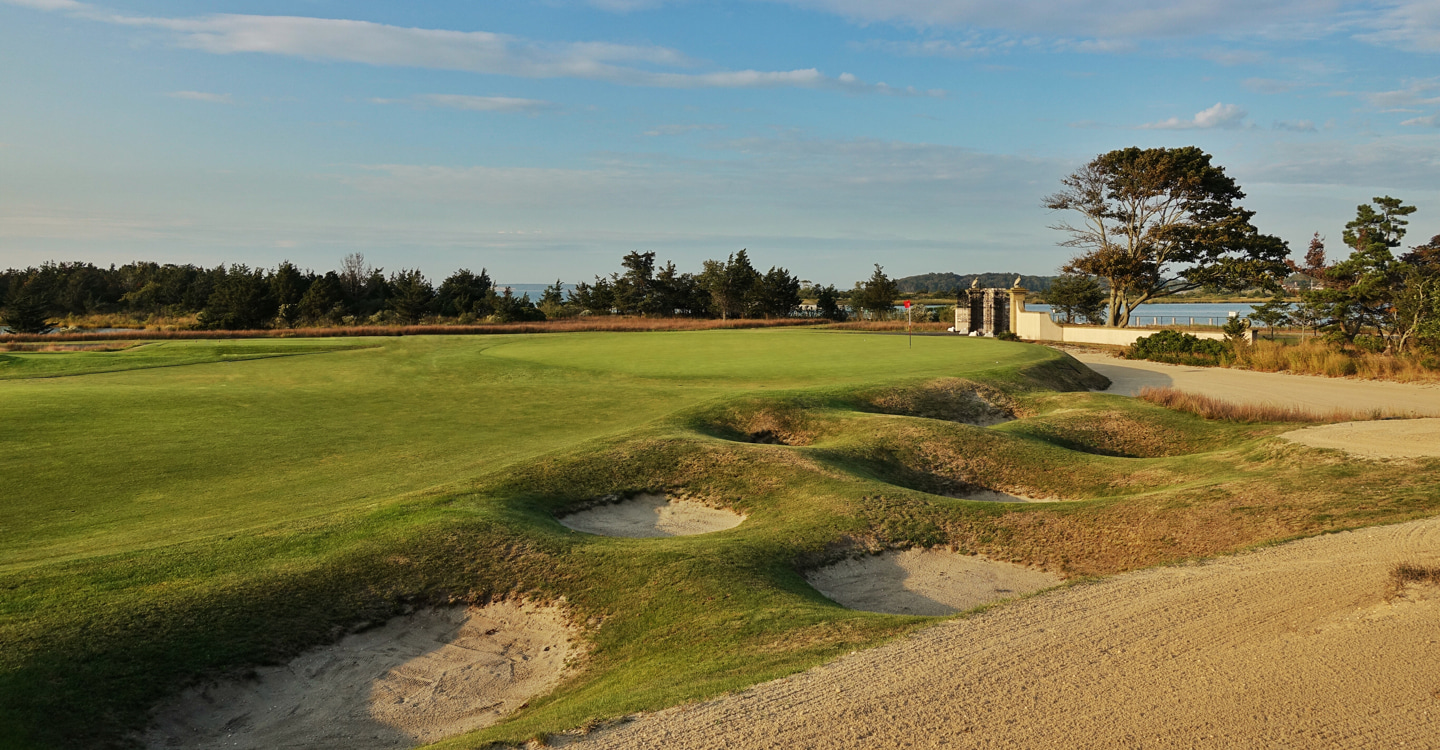
Behind the sandy mound hide these artful pits of doom Photo Credit: Jon Cavalier
-

The 17th is perhaps the best Leven par-4 that Macdonald and Raynor ever built Photo Credit: Jon Cavalier
-
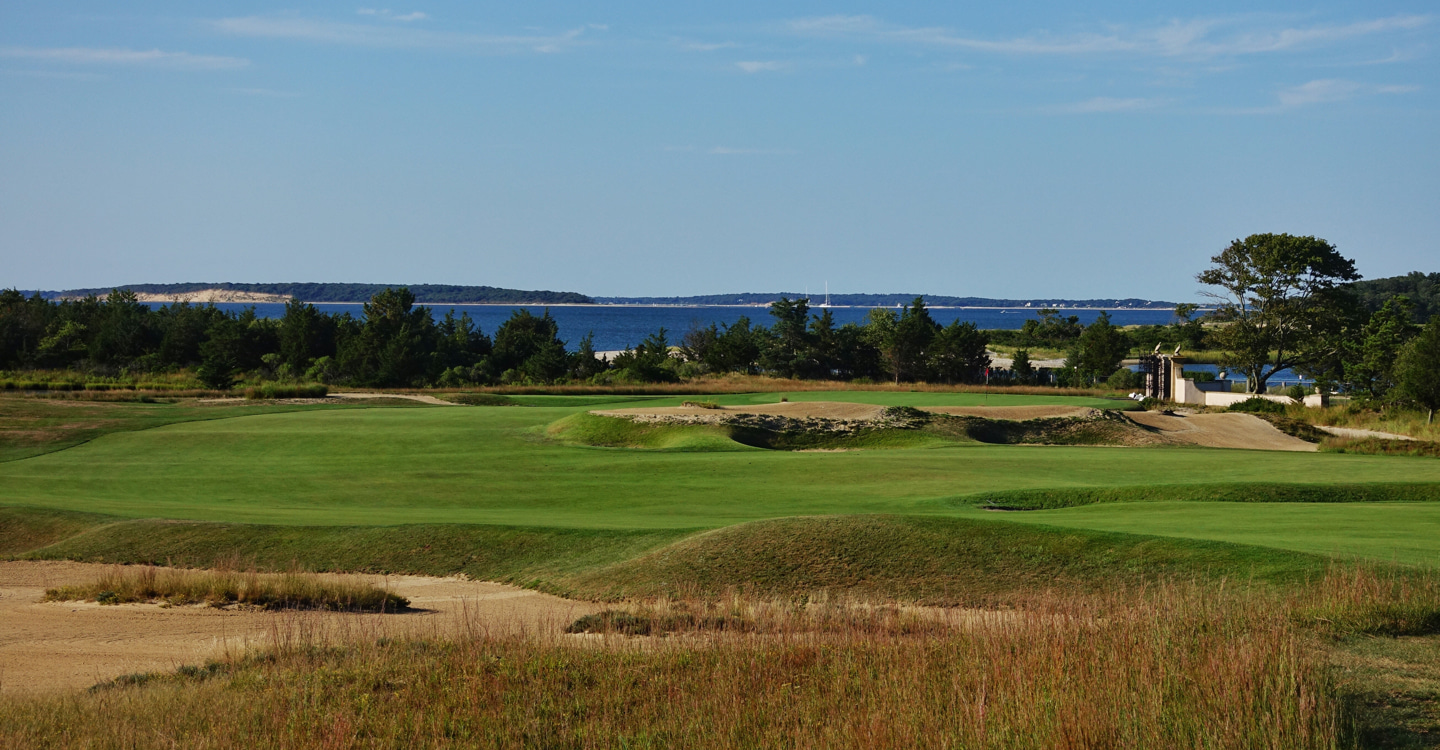
Room to the left is provided to avoid the fronting dune bunker Photo Credit: Jon Cavalier
-

This short par-4 rolls beautifully down toward the water Photo Credit: Jon Cavalier
Chicago Golf Club – 5th – 320 yards
Chicago Golf’s Leven plays slightly uphill with an angled bunker right along the aggressive line. The green on the 5th, with its internal spine and contours is not only one of the best at CGC, it is one of the best in golf. It throws a twist in the hole as the spine and knob make it advantageous to be on the semi-blind left side for a left pin, avoiding having to hit over the spine and worry about landing on its downslope.
-
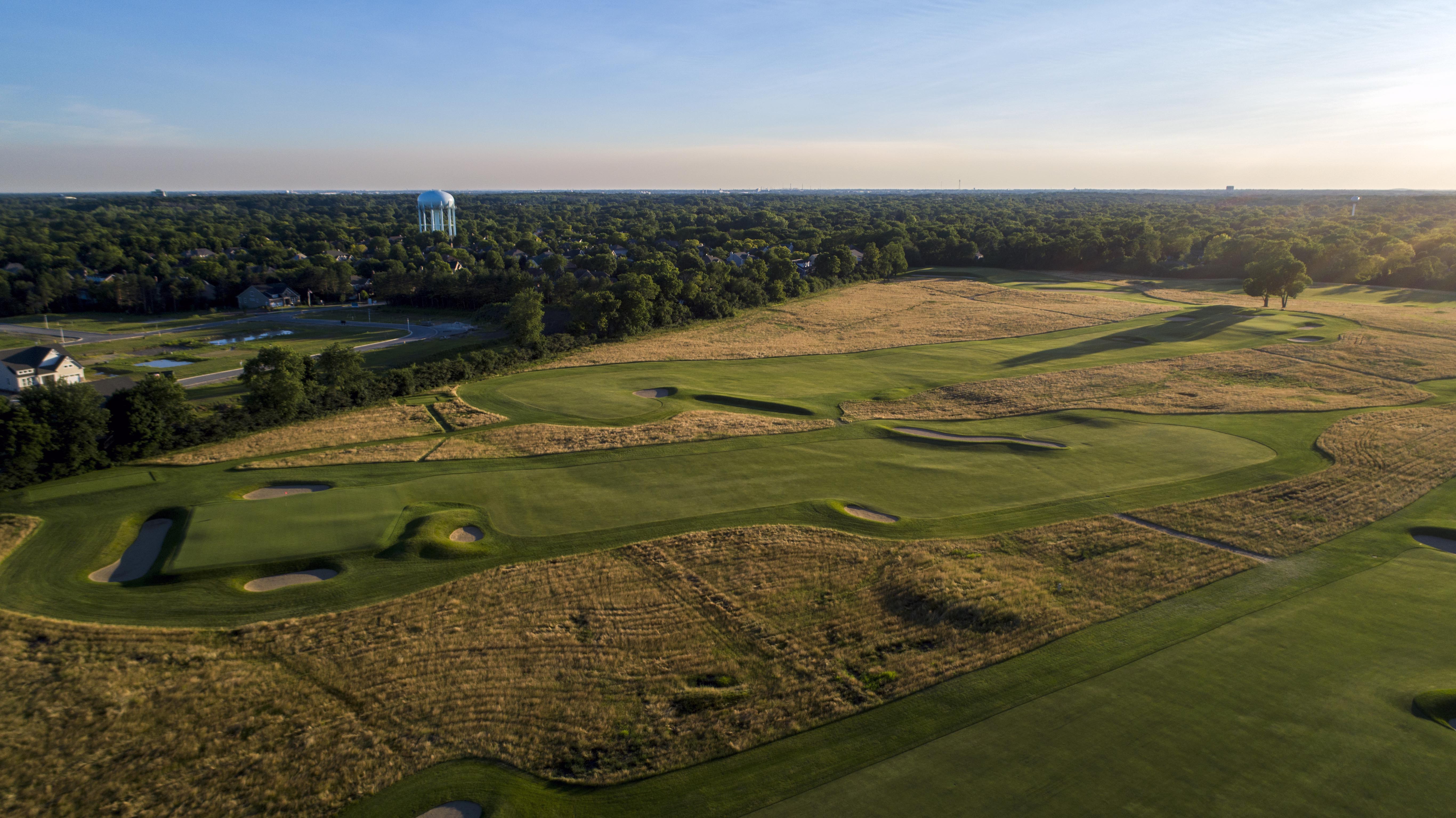
The par 4 5th at Chicago Golf Club
-
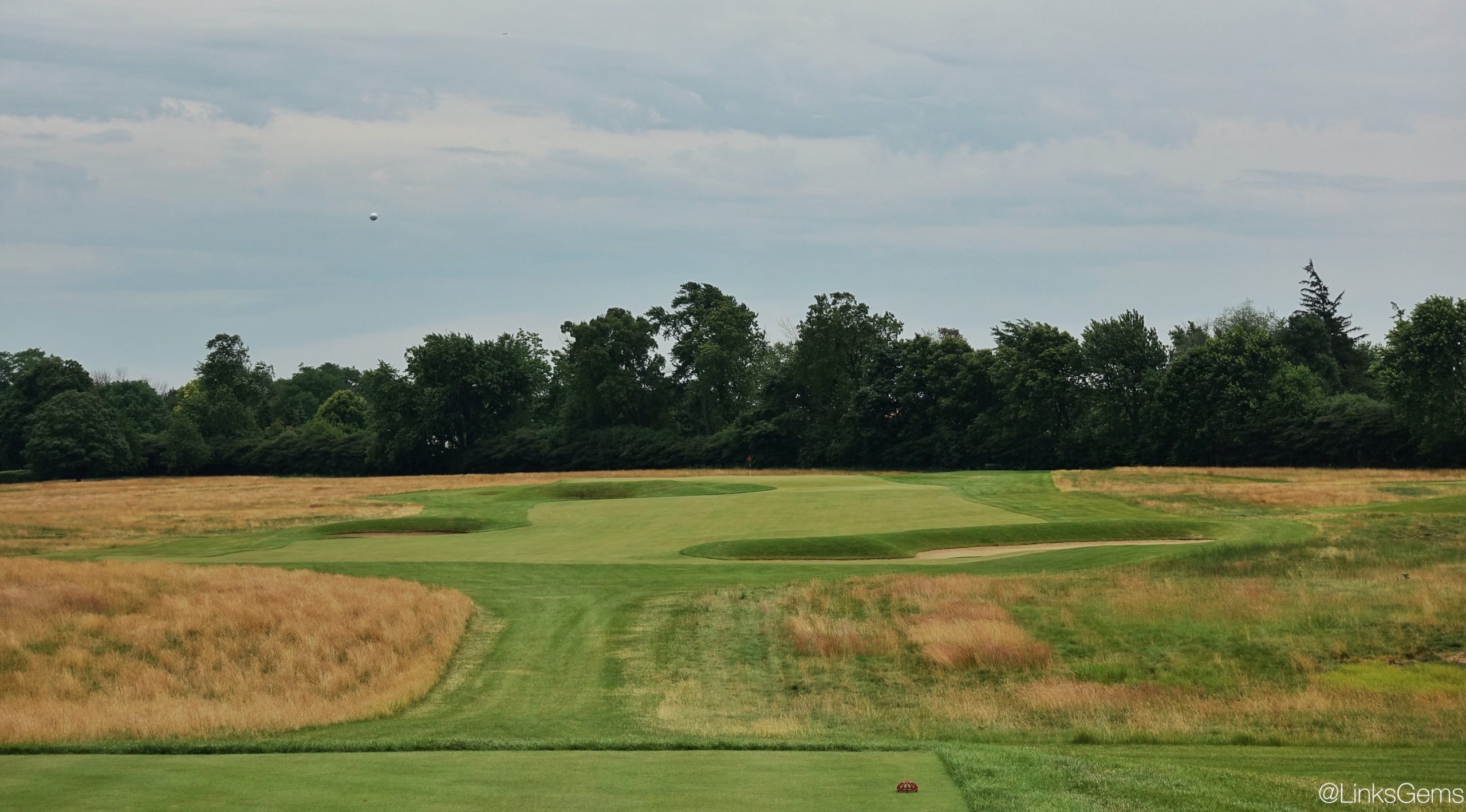
-
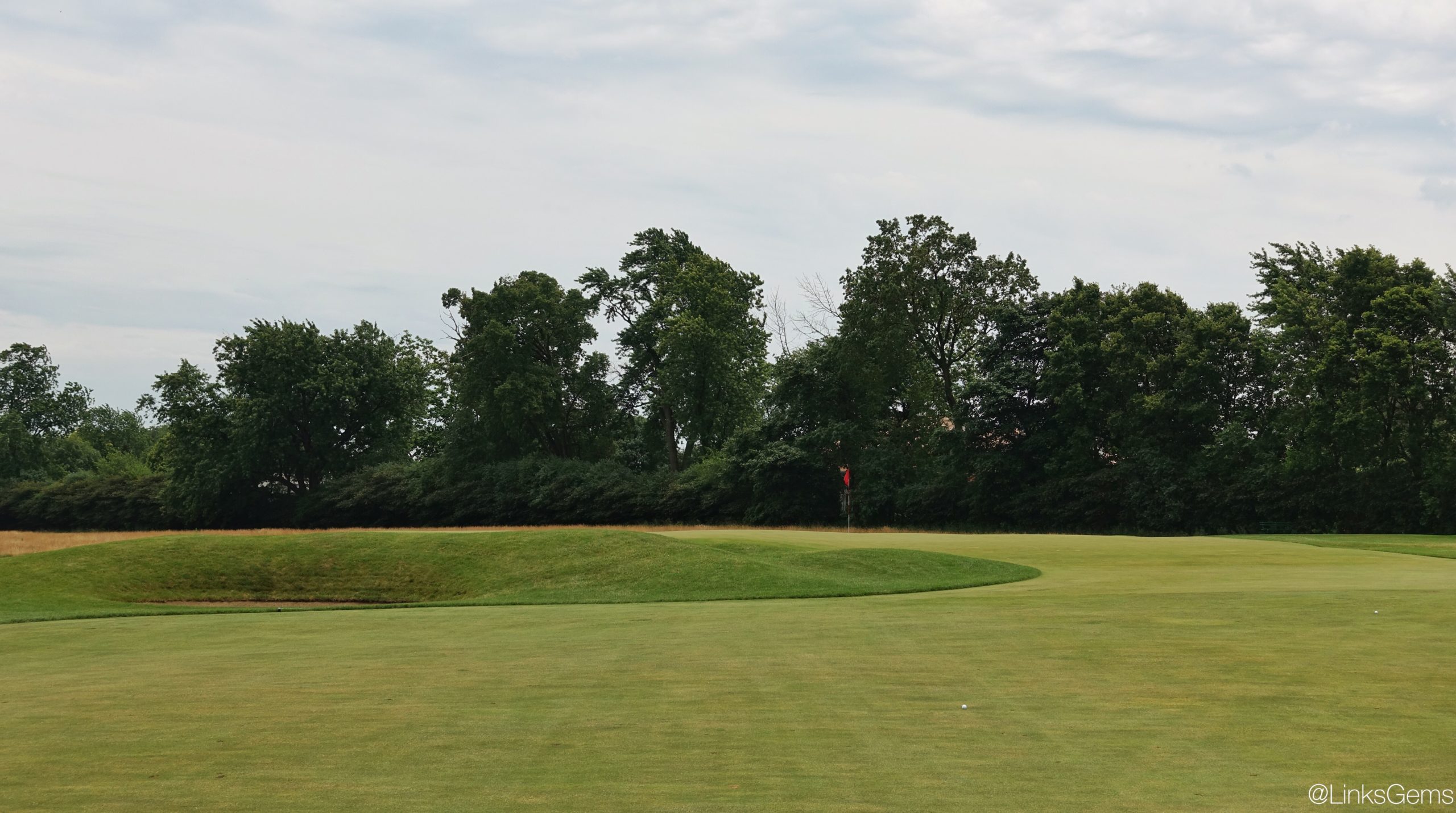
-
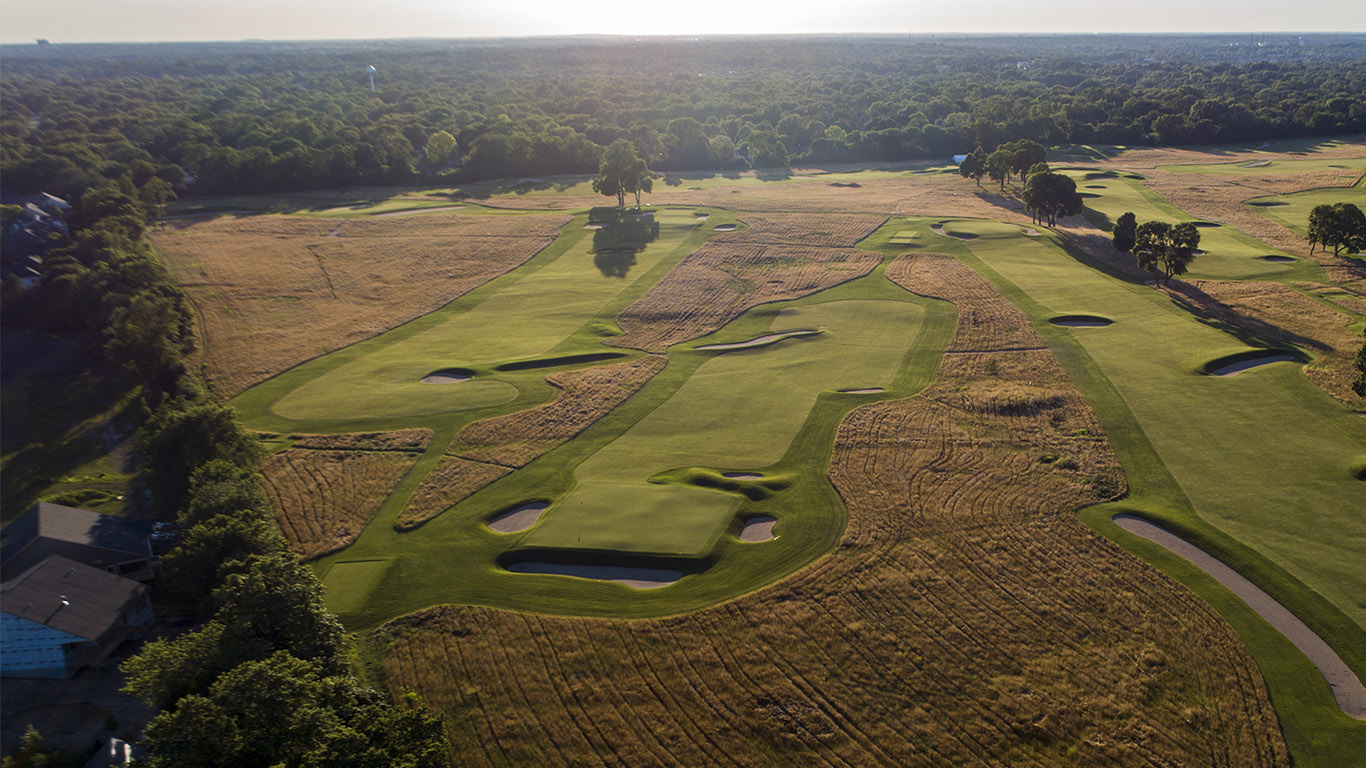
The Creek – 10th – 313 yards
One of the most fun and picturesque renditions of the Leven hole comes at The Creek, a Macdonald/Raynor design. The 10th plays along the Long Island Sound and its creek. The beach is on the left and water awaits to the right, but 10th is drivable for long players in ideal conditions. Bailing away from the water left will lead to an obstructed view thanks the sand dune that Gil Hanse restored. The half wedge to a semi-blind green is no easy task. This is an example of a hole that has gotten more compelling with modern technology.
The Course at Yale – 6th – 421 yards
Raynor’s Leven at Yale swings left around a defended corner. Since these photos have been taken, the pines on the left have been removed, restoring the intent of the hole and the creek which guards the aggressive line. Straying away from the creek will lead to an approach shot that has to deal with the mounding left. Like the rest of Yale, the 6th would become one of the better examples of the Leven with a restoration.
St. Louis Country Club – 11th – 389 yards
The 11th at Macdonald’s SLCC plays uphill and over a valley. The ideal line is up the right but it is guarded by bunkers, and artistic mounding watches over the left side. Further tree removal would greatly benefit the 11th and the preceding 10th hole.
-
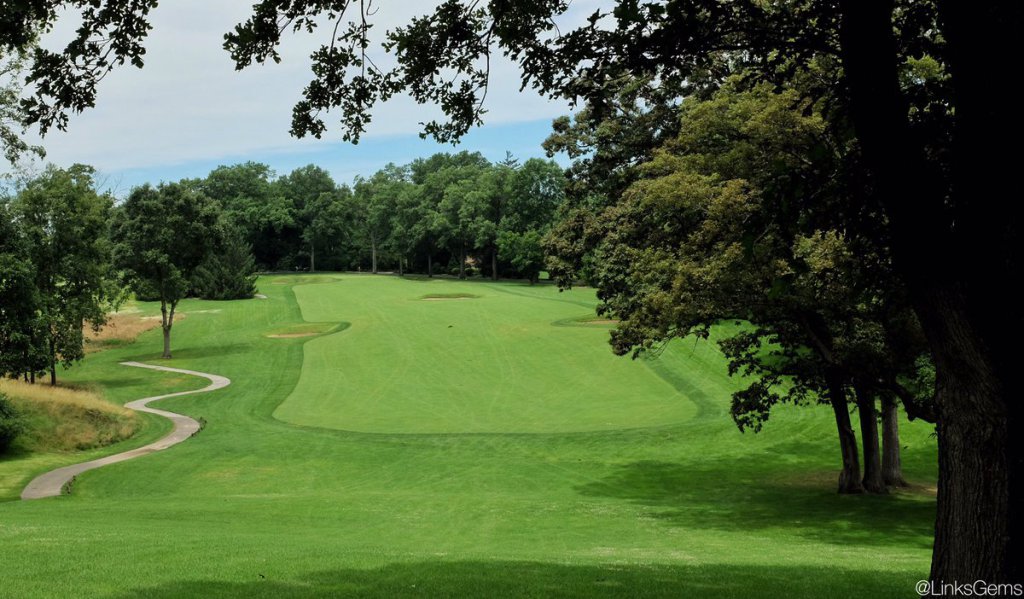
The tee shot at the 11th at St. Louis
-
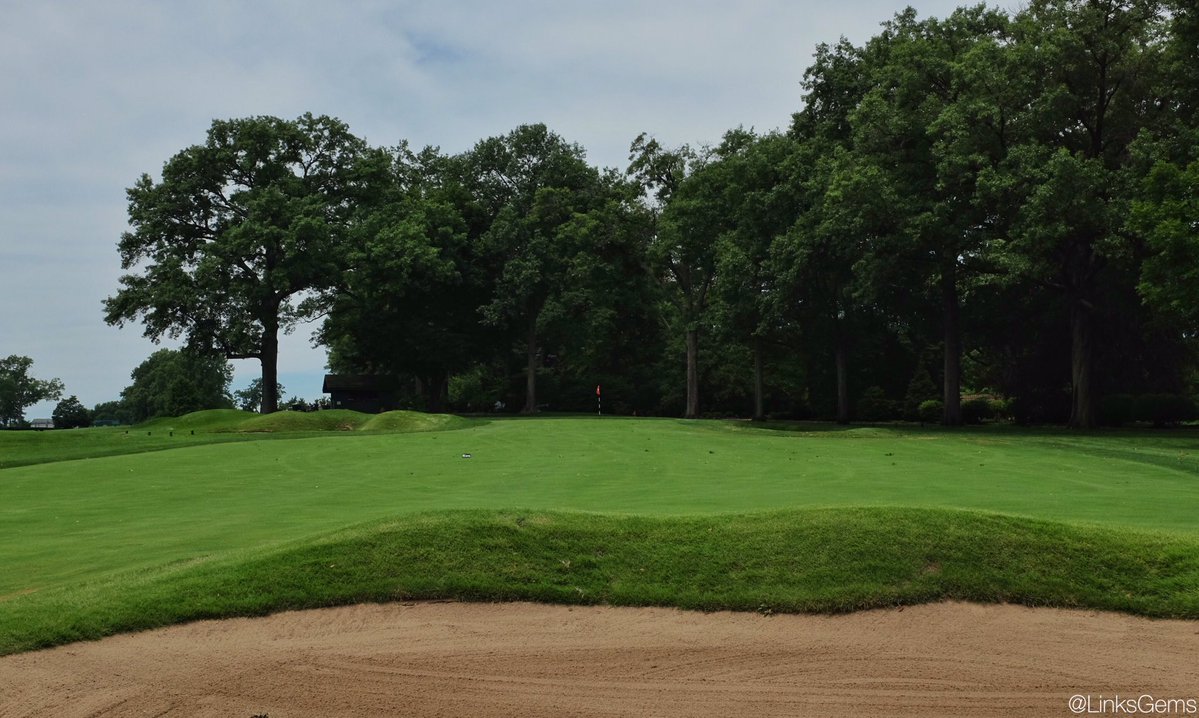
Approaching the Leven 11th Photo Credit: Jon Cavalier
-
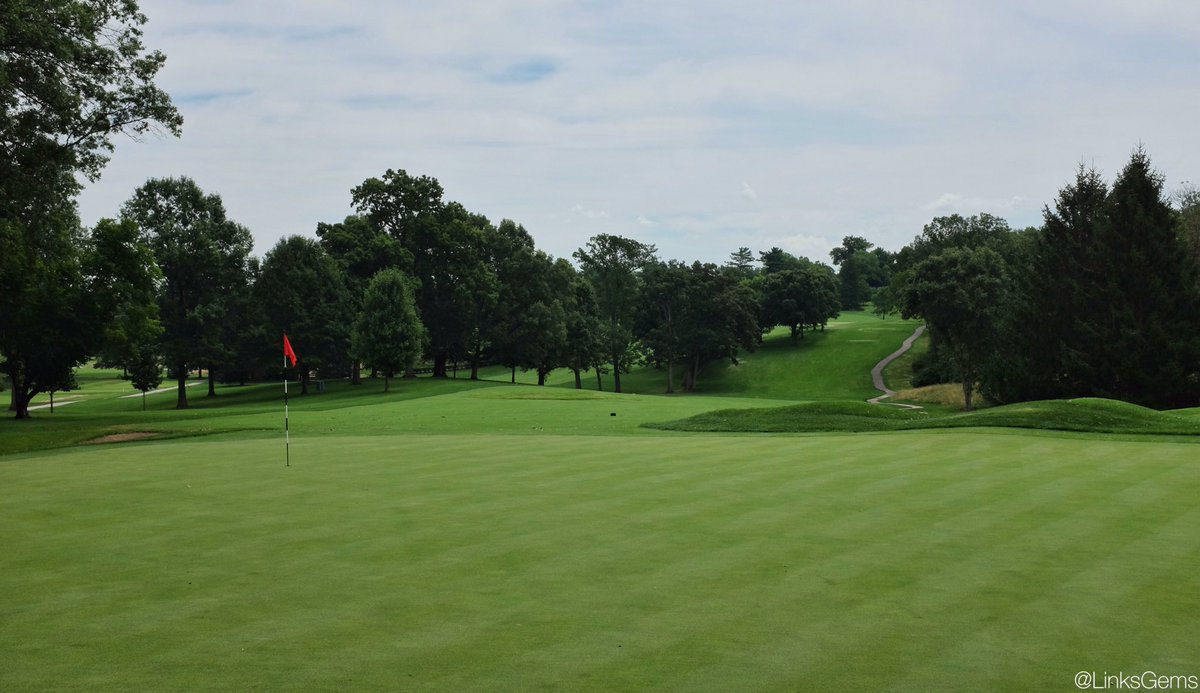
Behind the 11th Photo Credit: Jon Cavalier
Blue Mound Golf & Country Club – 16th – 355 yards
Blue Mound’s Leven is one of Raynor’s simplest designs tee-to-green with the entire left side of the hole available to the player. The difficulty of this version is at the green. A subtle left slope feeds into the bunker and an internal spine makes lag putting tricky.
-
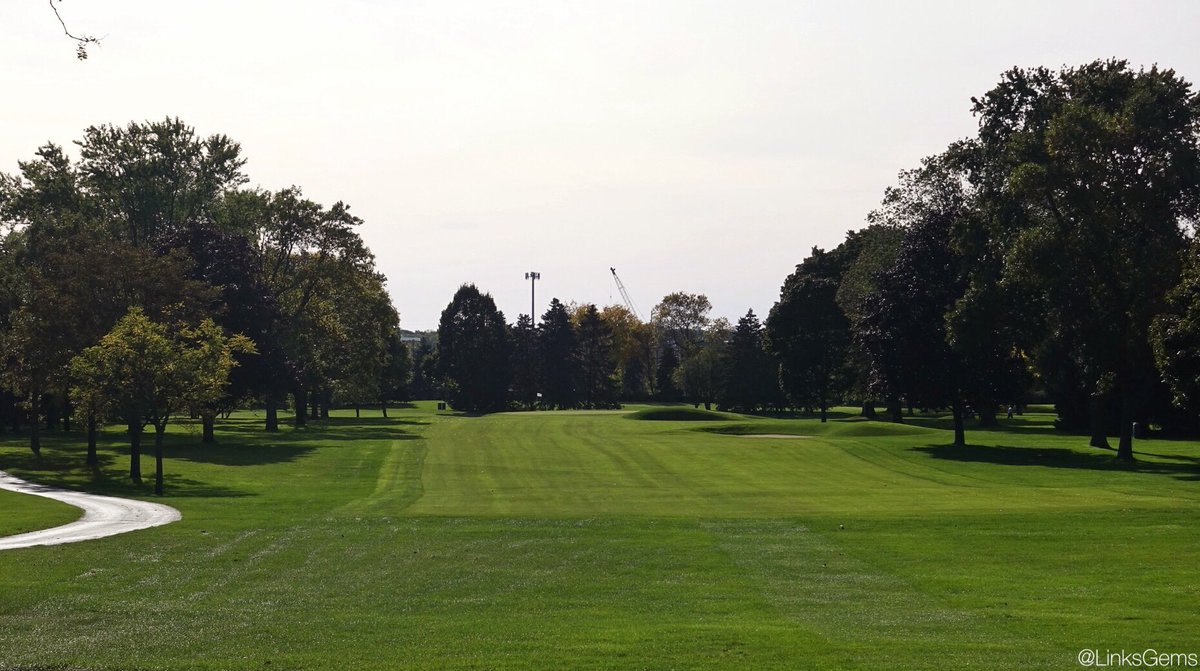
Blue Mound's 16th tee shot Photo Credit: Jon Cavalier
-
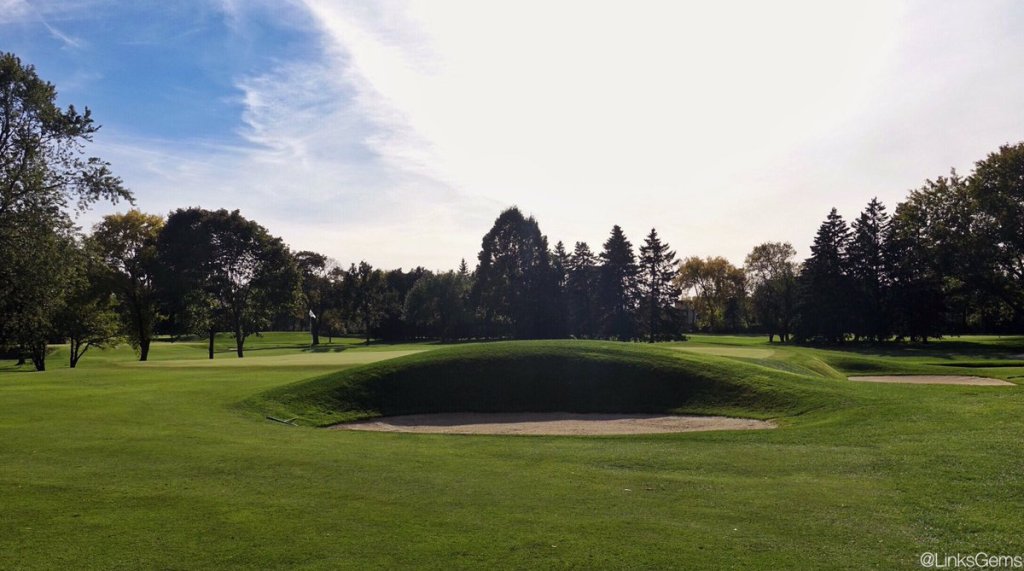
Blue Mounds green side bunker and mound Photo Credit: Jon Cavalier
-
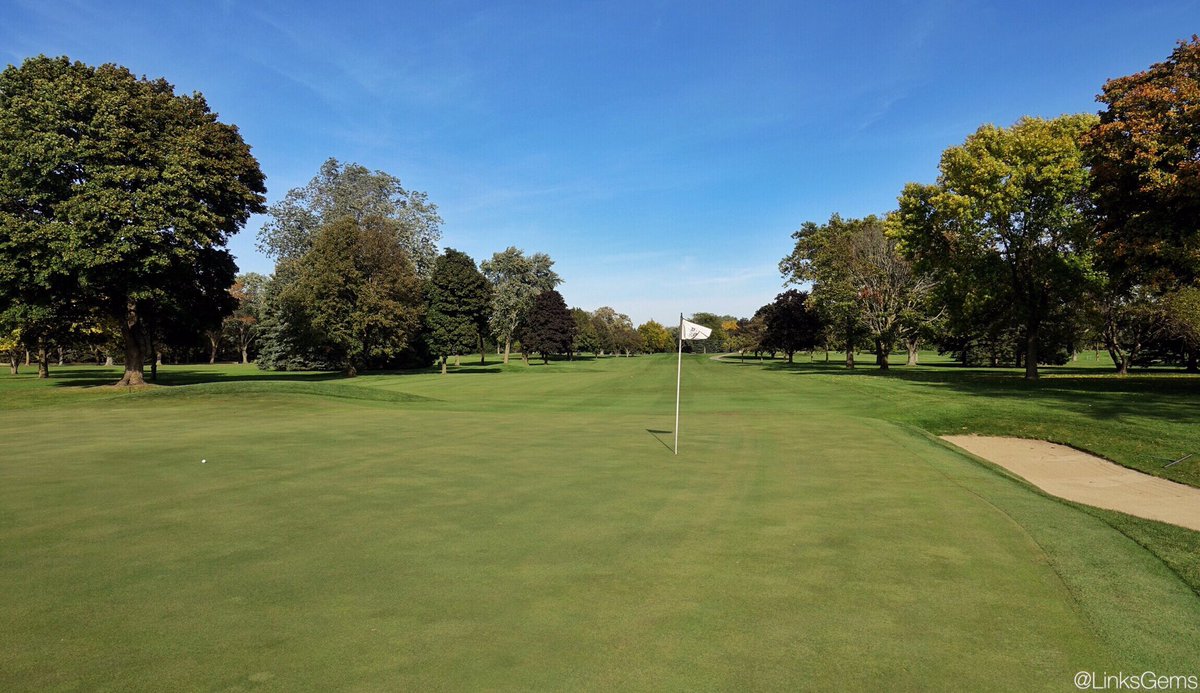
Looking back at the 16th. Photo Credit: Jon Cavalier
Mid Ocean Club – 14th – 357 yards
Another artful Macdonald creation, the Leven at Mid Ocean sits in a small valley and works its way uphill to the right. The green is defended by mounding and bunkers that are as beautiful as they are penal.
-
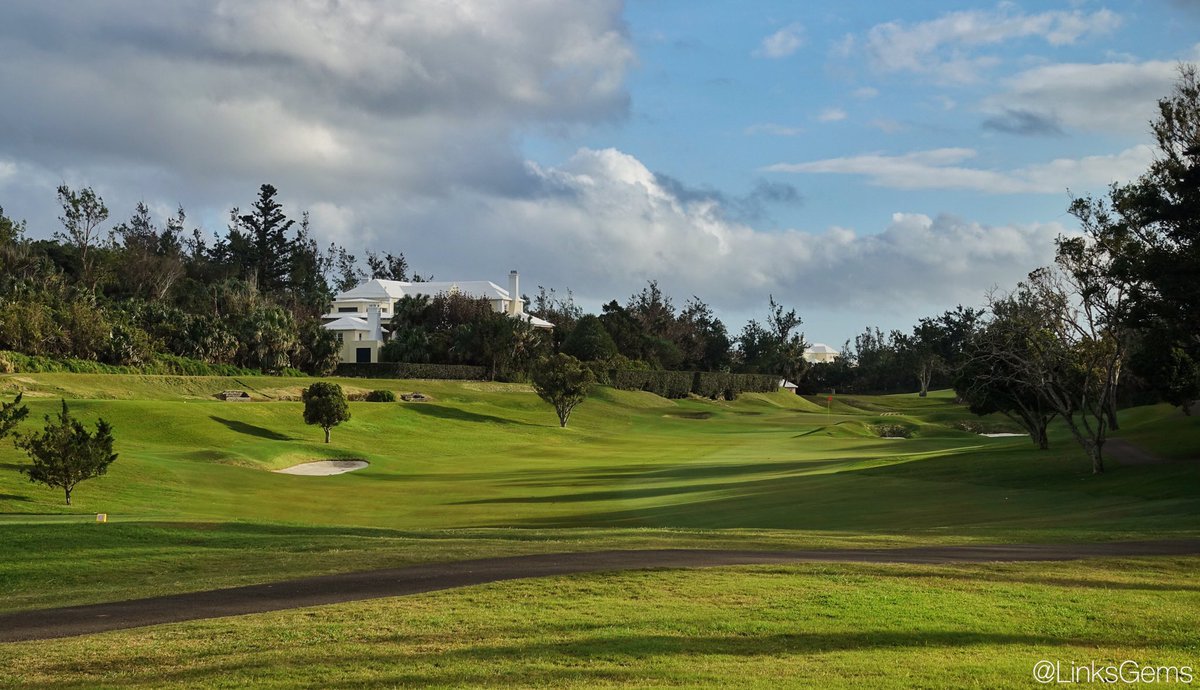
The tee shot at Mid Ocean's 14th. Photo Credit: Jon Cavalier
-

The left side yields the ideal angle Photo Credit: Jon Cavalier
-
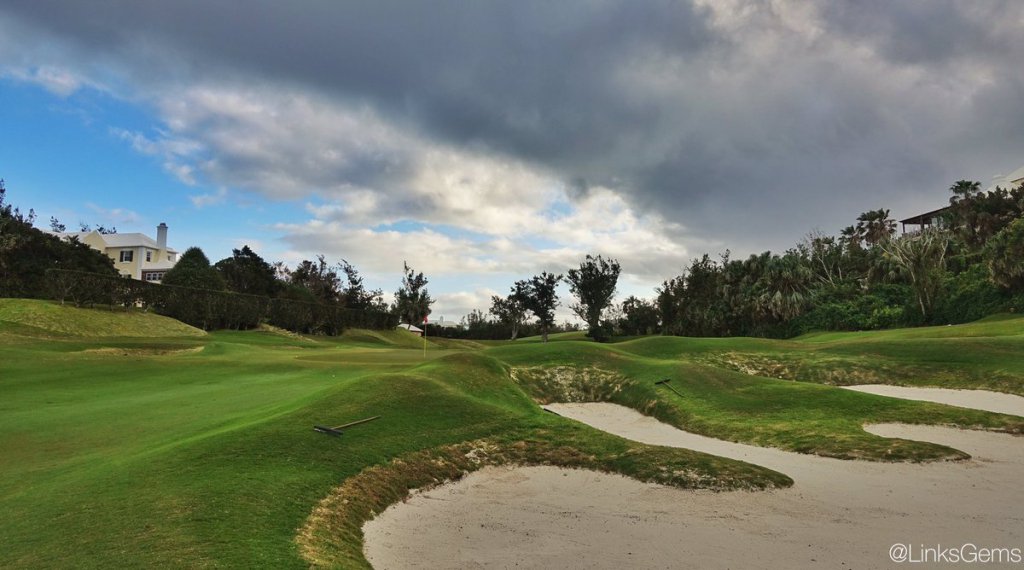
The front right bunkering and mounding at Mid Ocean. Photo Credit: Jon Cavalier
Country Club of Charleston – 4th – 409 yards
Thanks to the recent restoration work from Kyle Franz, the Country Club of Charleston’s Leven Hole has regained its original glory. The right green-side mounding on the obstructs any tee shot which plays to the safe side. In order to gain a clean look at the green, a tee shot must contend with the bold fairway bunkering on the left, a some 260 yard carry from the back tee box. From there it leaves an approach shot to a green with a vexing false front and a few subtle spines.
-
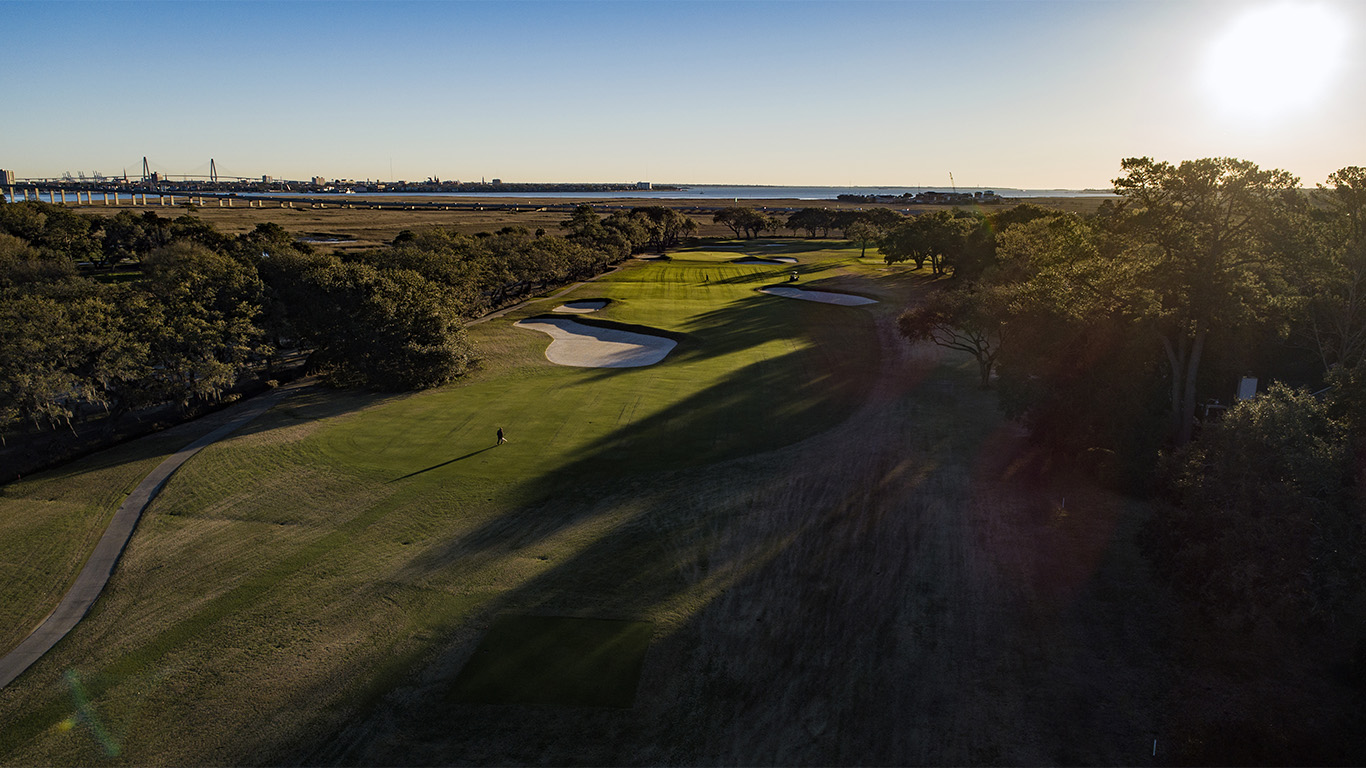
Off the 4th tee
-
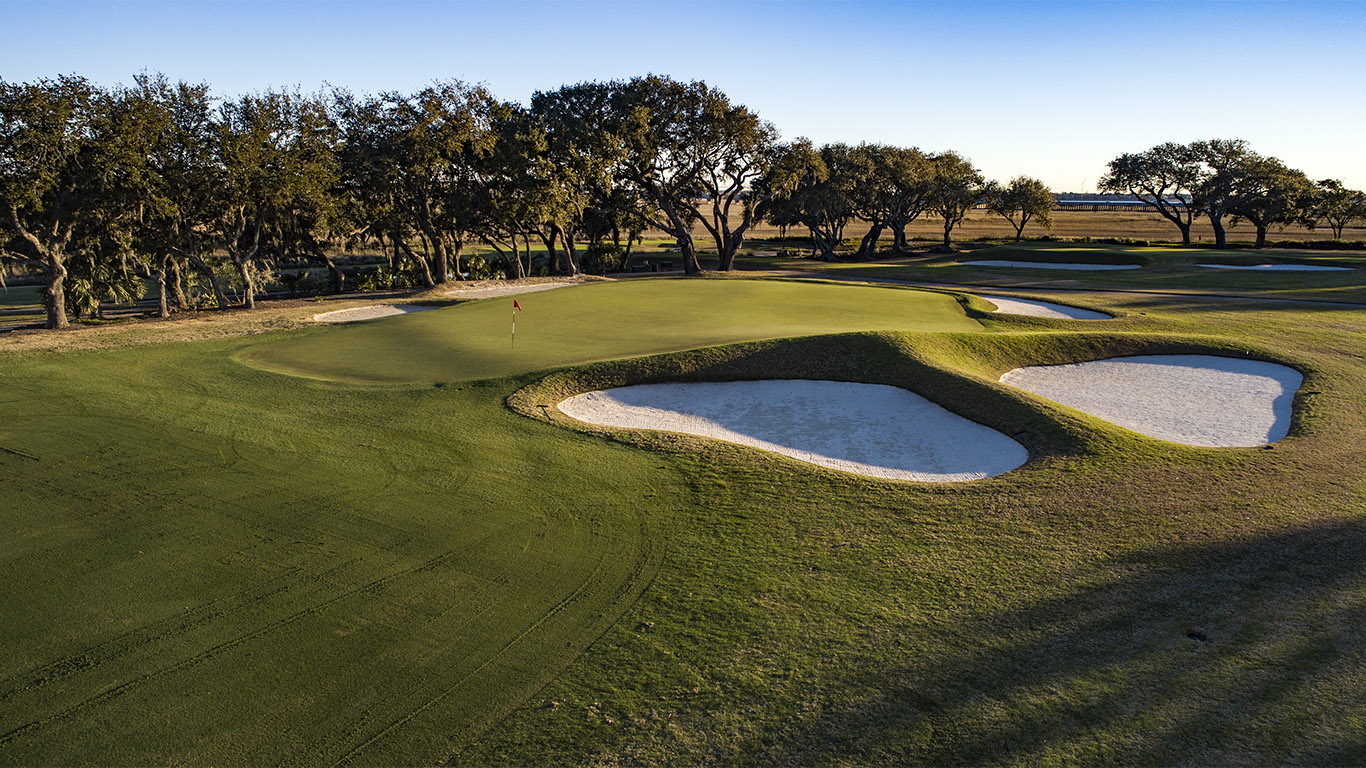
Right of the 4th green
-

Right of the 4th and 7th greens
-
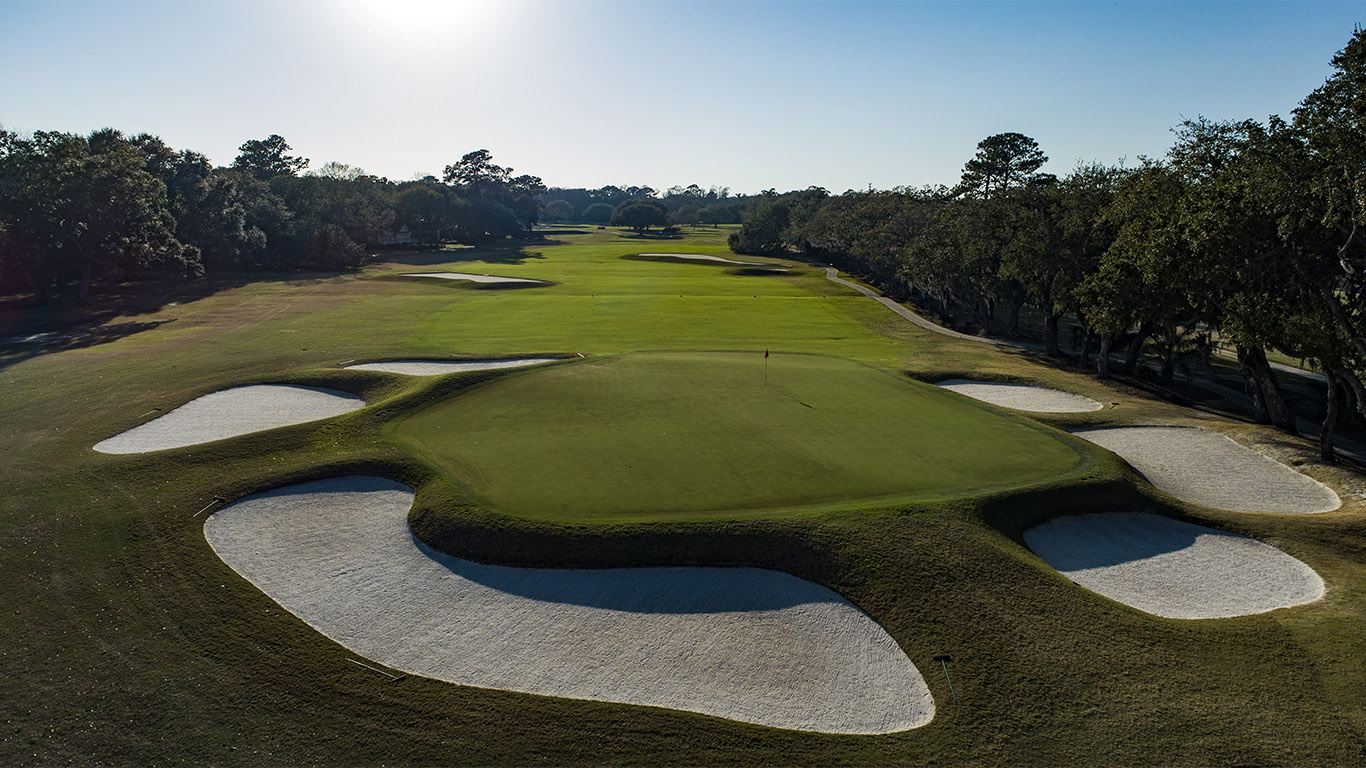
Behind the 4th
-
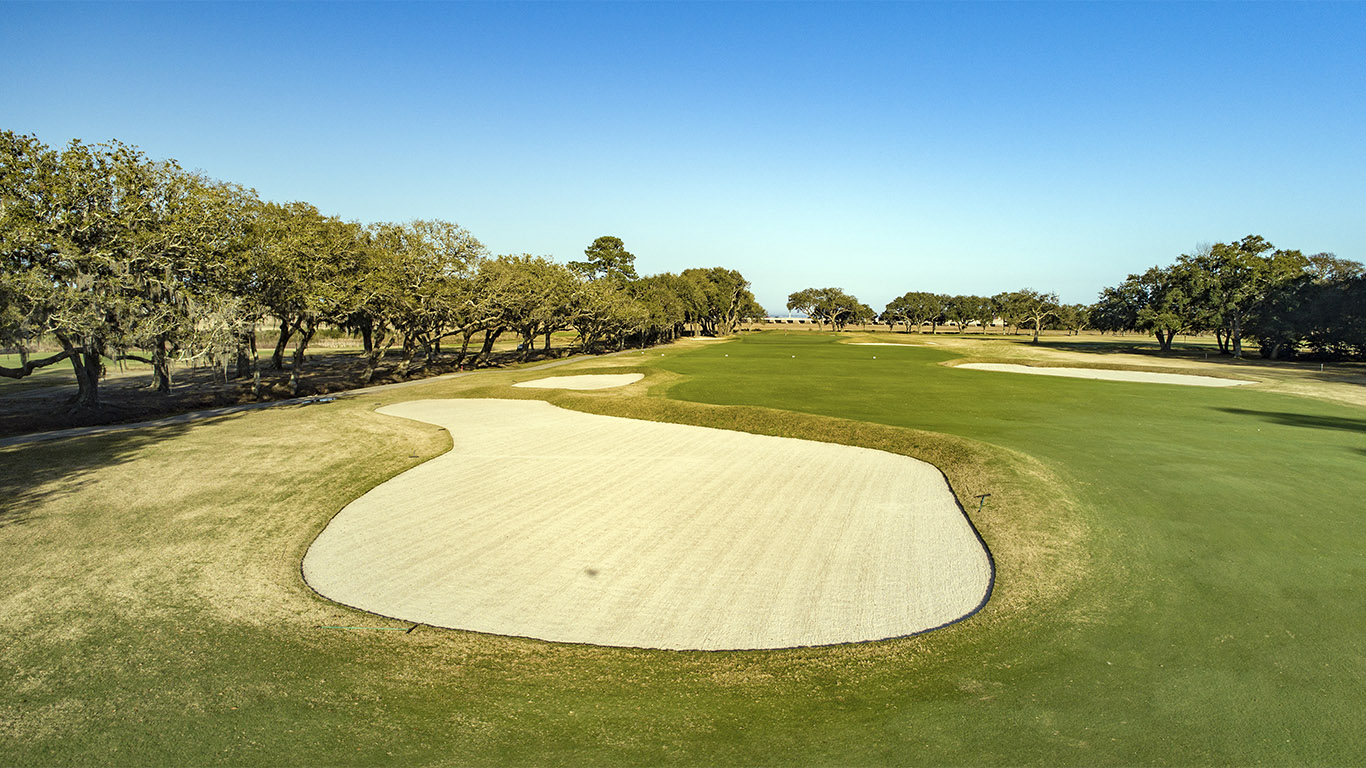
A view from the left of the 4th
-
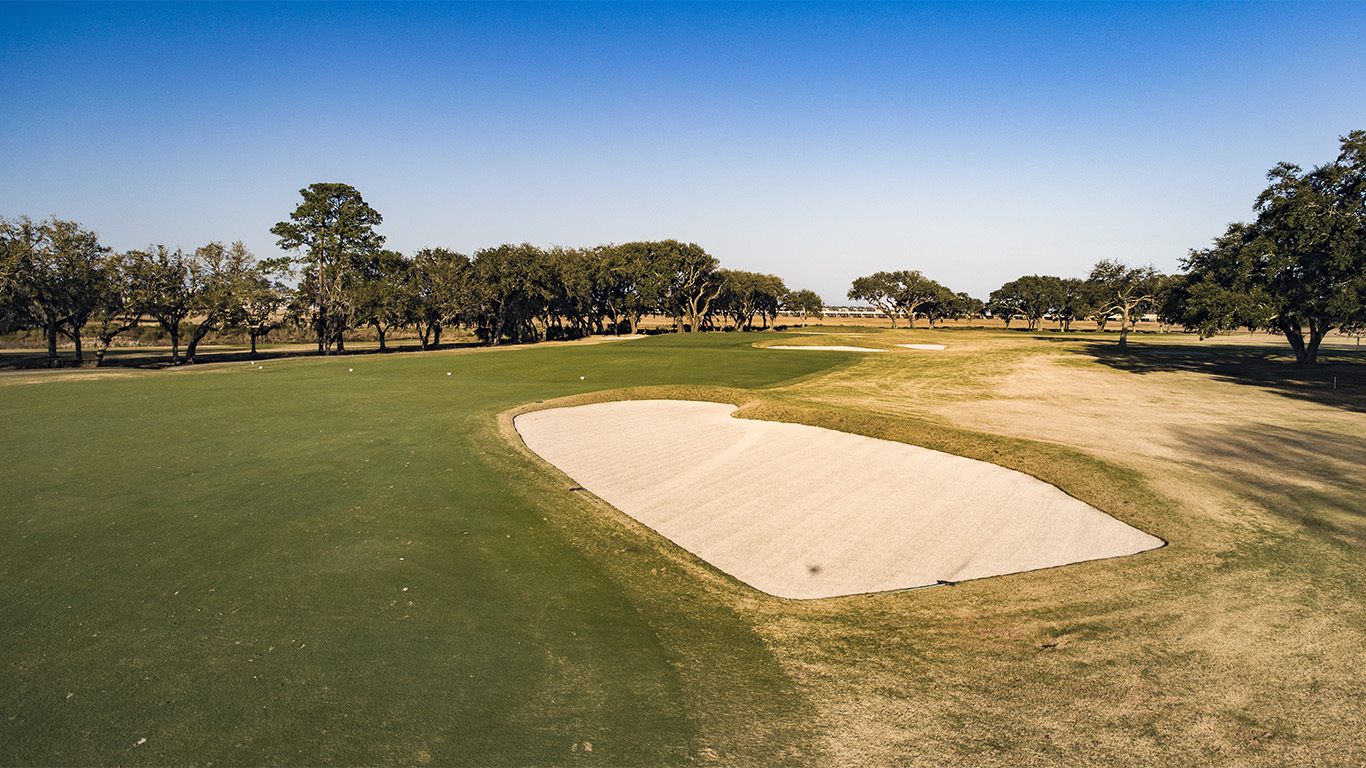
The obstructed view from the right side of the 4th
Fox Chapel G.C. – 12th – 344 yards
This under the radar Raynor gem is packed with solid templates, including the Leven 12th. It plays along a side hill that feeds tee shots into a right hand bunker. That bunker must be challenged for the best angle into the benched green.
-
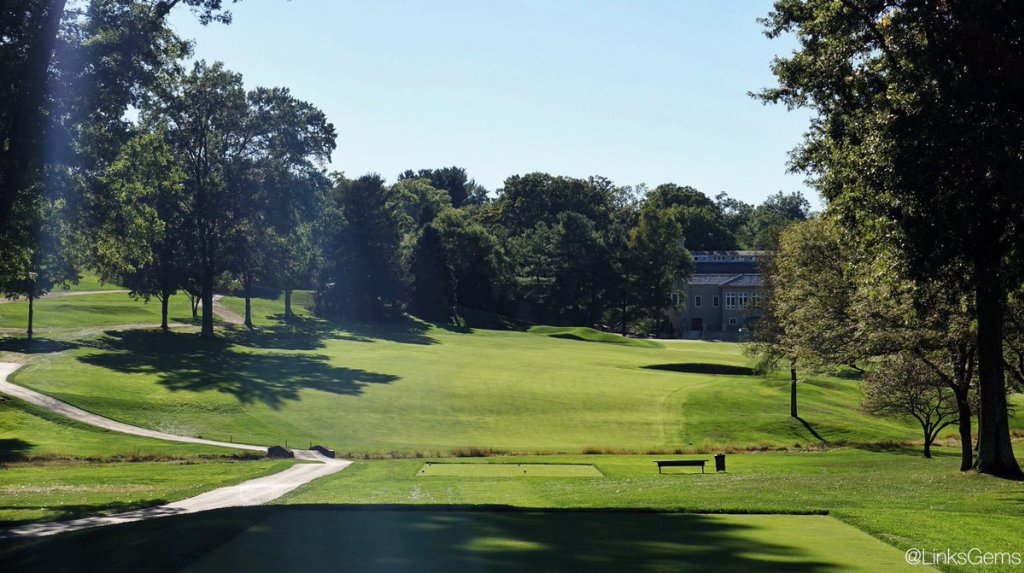
The 12th tee shot at Fox Chapel's 12th Photo Credit: Jon Cavalier
-
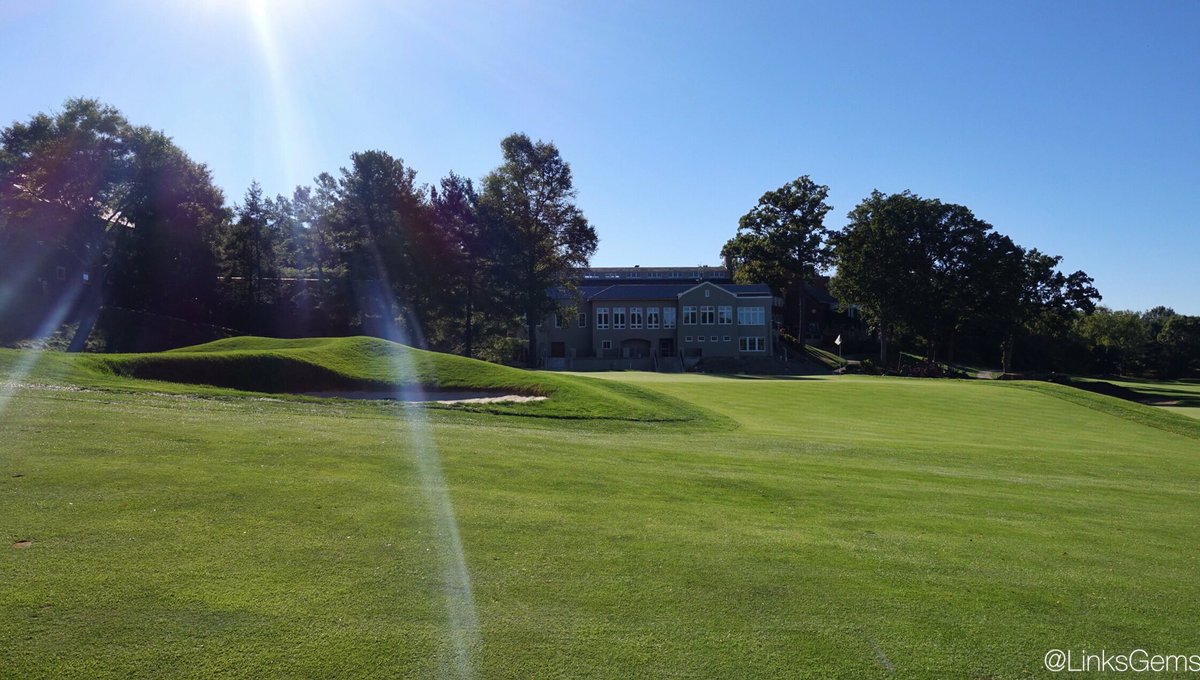
The left side of the 12th Photo Credit: Jon Cavalier
-
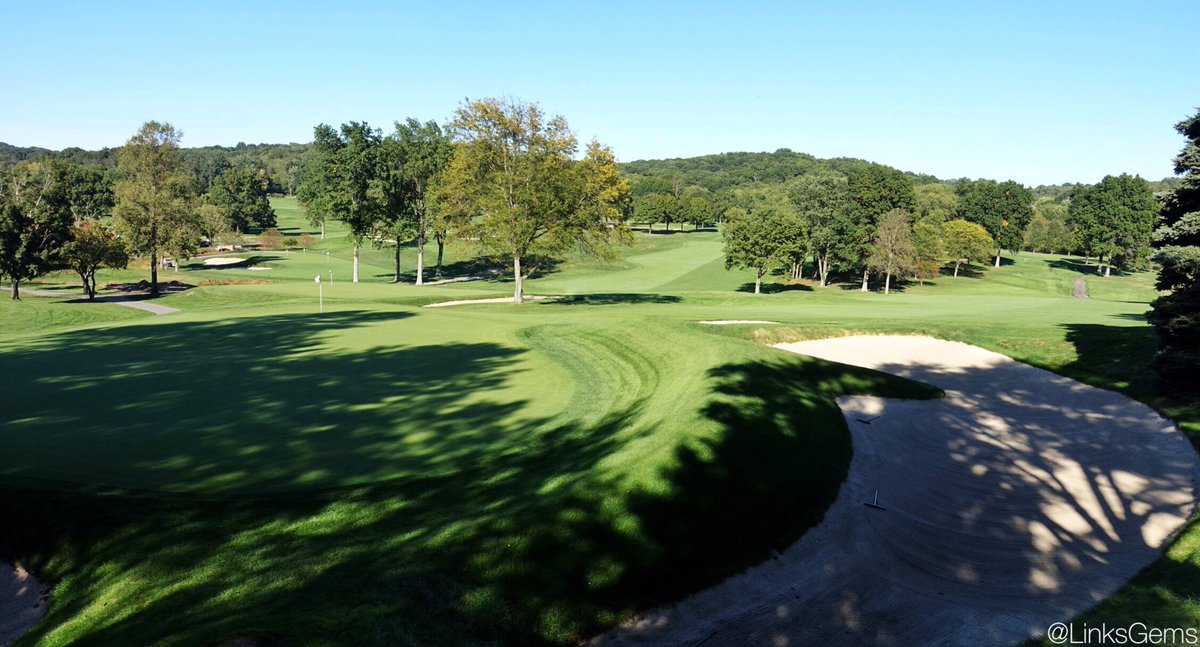
Behind the 12th green at Fox Chapel. Photo Credit: Jon Cavalier
Yeamans Hall Club – 2nd – 362 yards
The Leven at Yeaman’s Hall hits early in the round and provides a birdie opportunity right off the bat. The tee shot moves left, making driver a risky proposition. Playing a tee shot towards the right hand fairway bunkers yields the best angle to approach the green that slopes from left-to-right and contains a few spines. Playing up the left can lead to a blind approach from a disadvantaged angle.
Camargo Club – 14th – 390 yards
Camargo is where Seth Raynor’s most elegant templates can be found, including the Leven 14th. It plays up and over a hill and then swings down to the right approaching the green. A gaping bunker protects the front right of the putting surface.
-
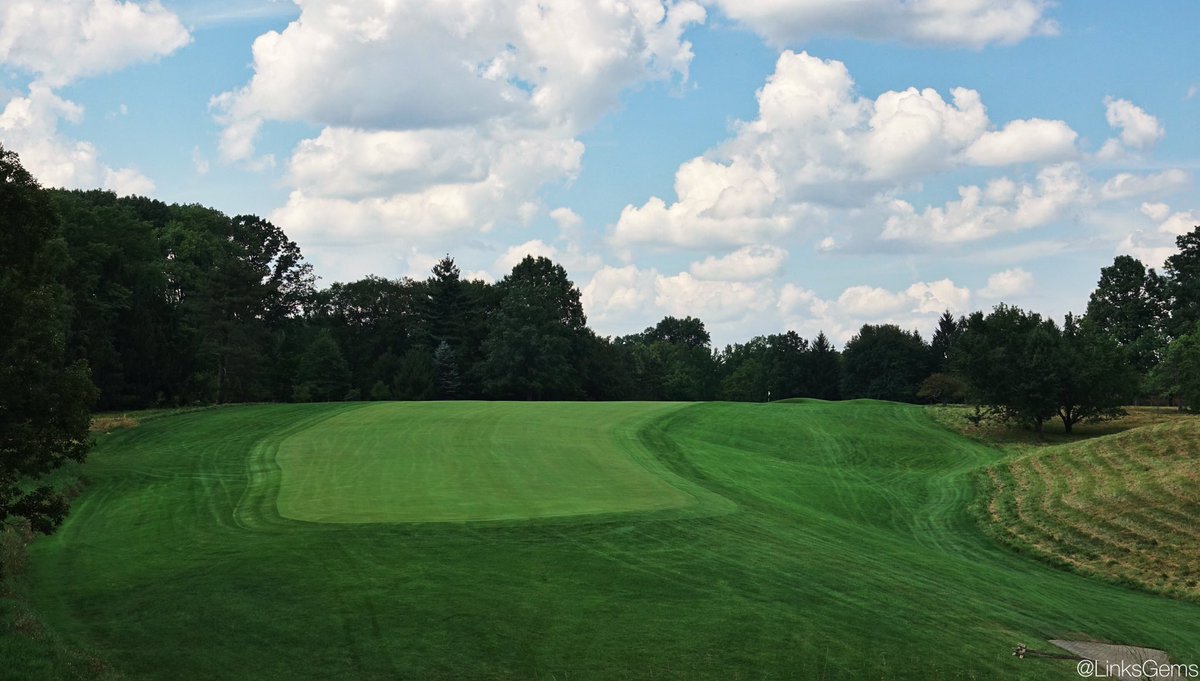
The 14th tee shot at Camargo. Photo Credit: Jon Cavalier
-
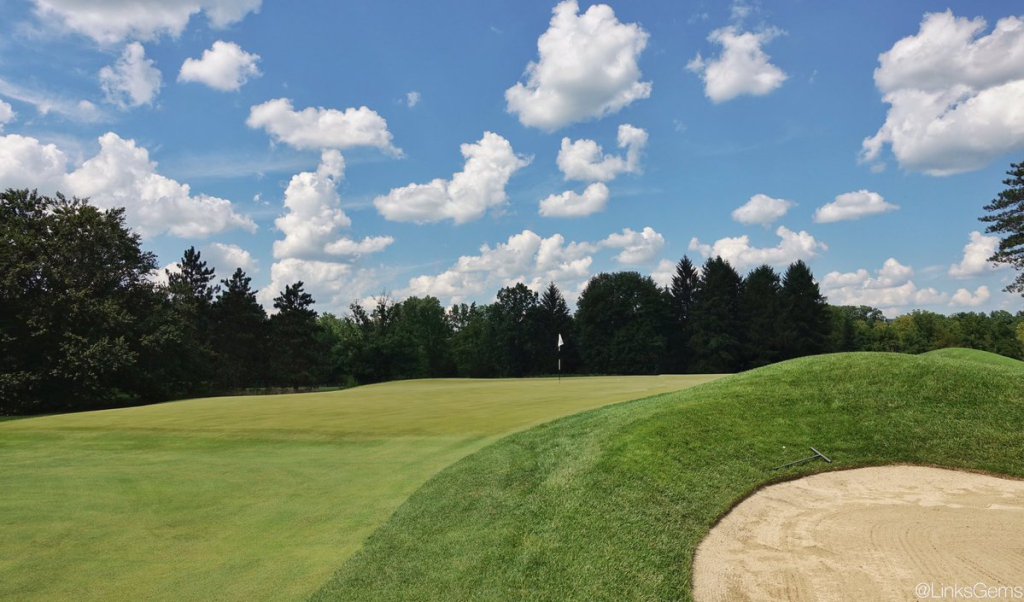
Camargo's 14th Photo Credit: Jon Cavalier
-
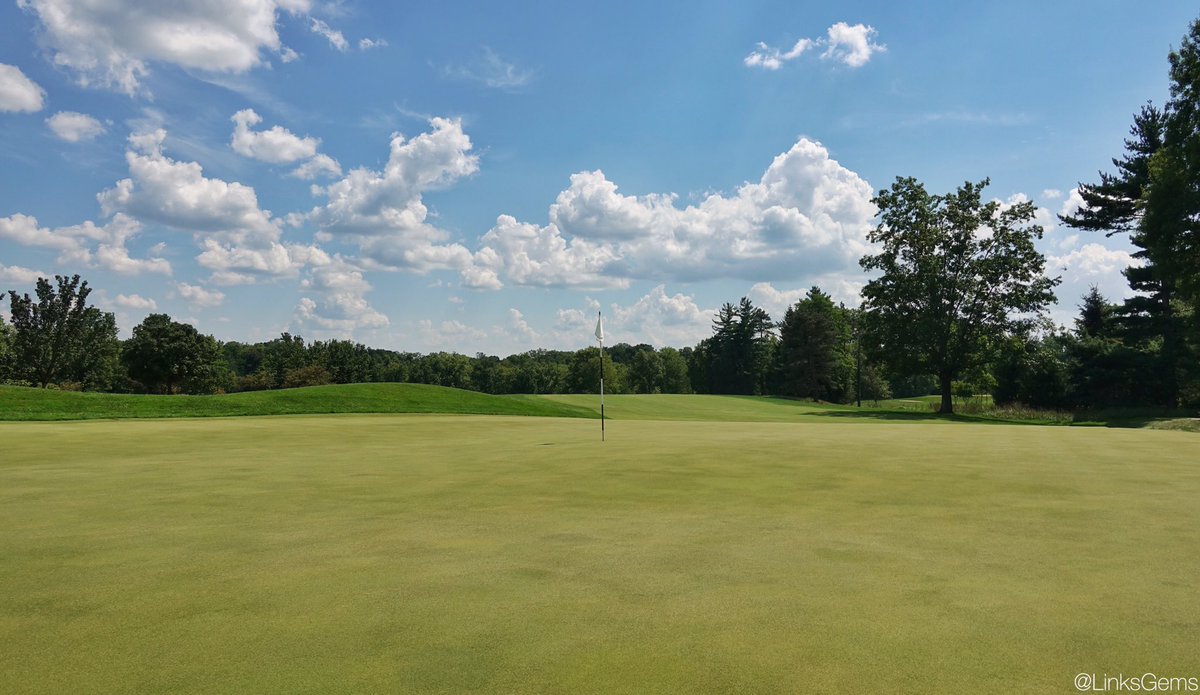
Behind the 14th green at Camargo Photo Credit: Jon Cavalier
Shoreacres – 3rd – 312 yards
One of the shortest Levens is also one of the most fun. Shoreacres 3rd plays straightaway with bunkers on both sides. The green is drivable with the right wind, but overzealous shots that miss the mark have difficult bunkers lying in wait.
-
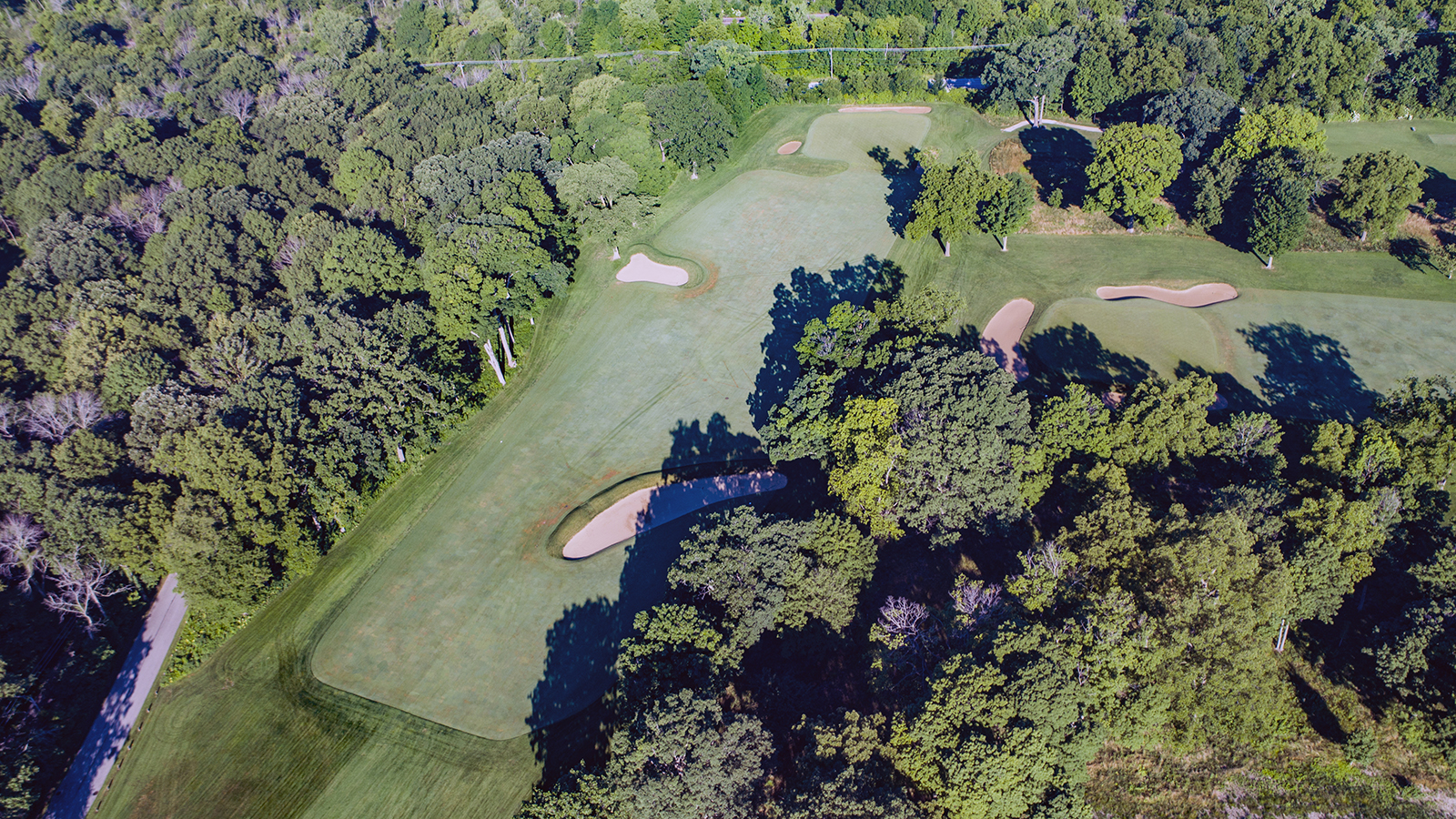
The leven 3rd at Shoreacres
-
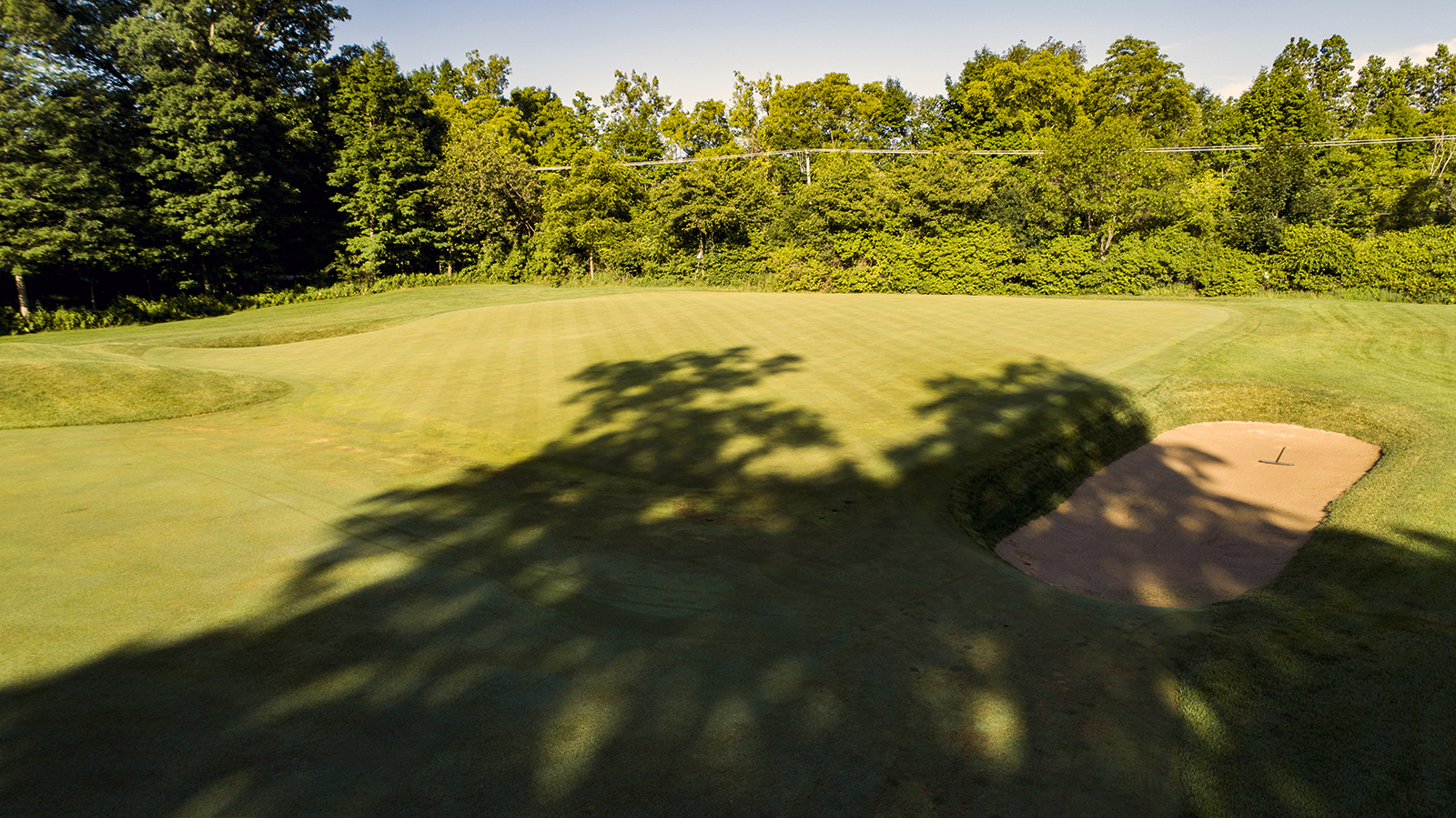
The severe 3rd green at Shoreacres
-
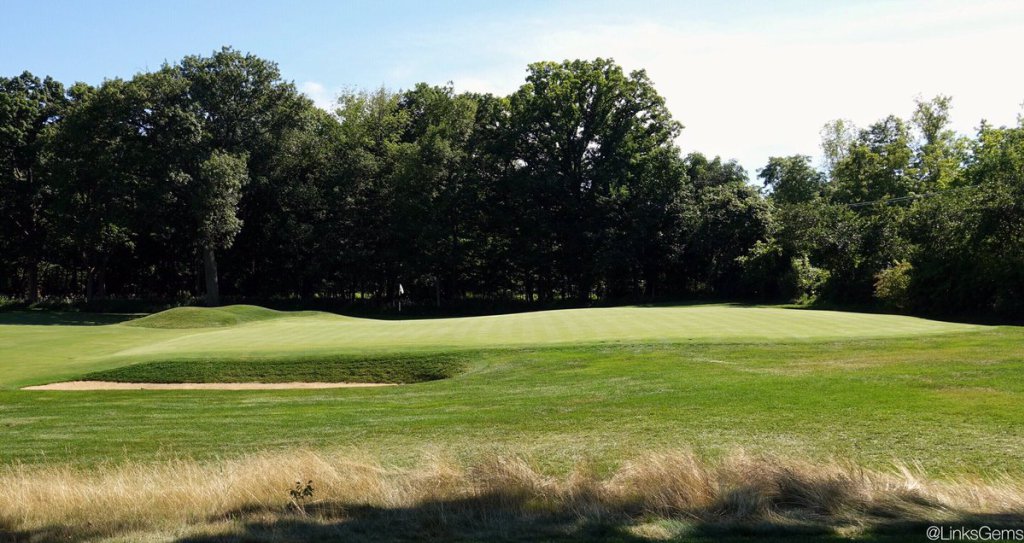
Old Macdonald – 13th – 346 yards
Tom Doak and Jim Urbina put a special twist on the Leven on their course inspired by C.B. Macdonald. The mound left of the green obscures shots from the right, but can also be used to feed balls onto the green.
-
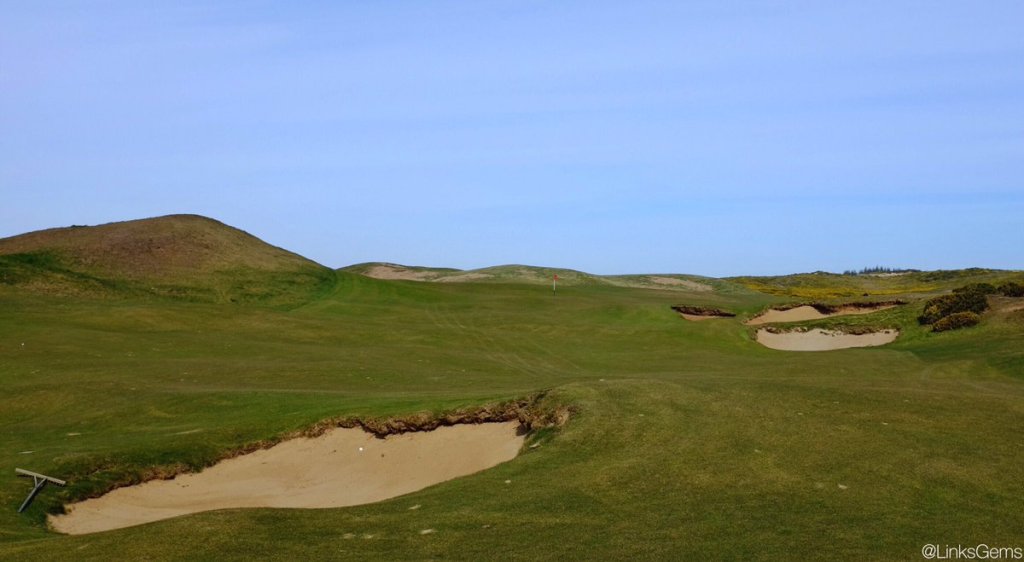
Photo Credit: Jon Cavalier
-
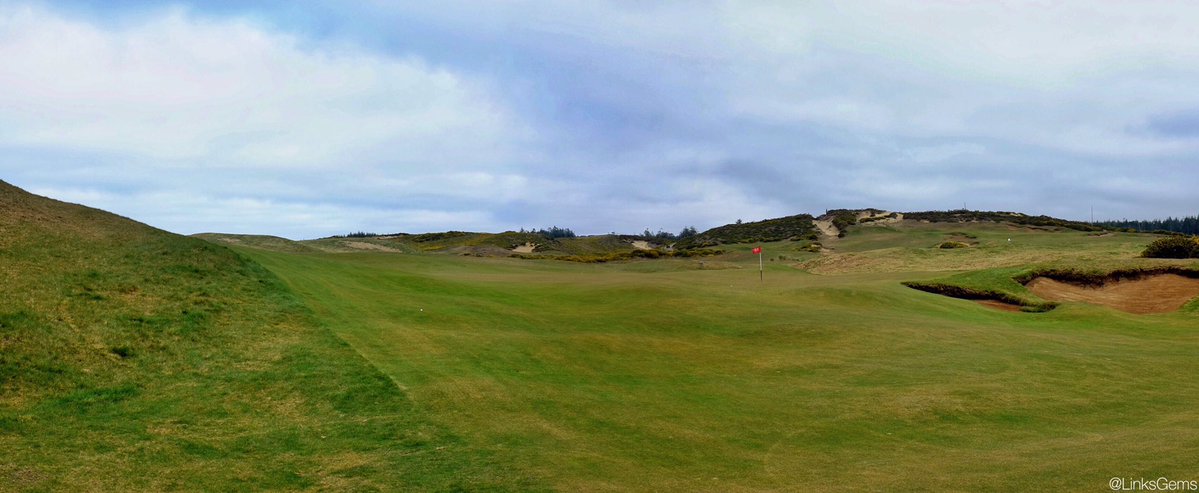
Photo Credit: Jon Cavalier
-
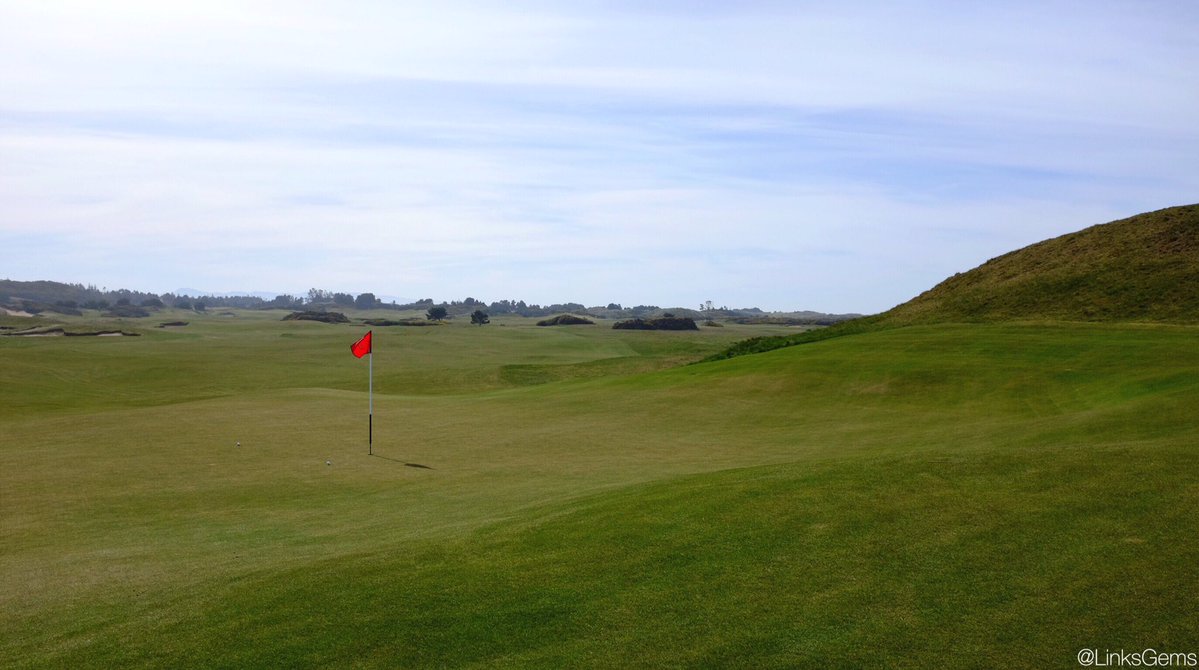
Photo Credit: Jon Cavalier
Boston Golf Club – 5th – 317 yards
The Leven 5th at BGC is named Shipwreck for a reason – there are numerous ways to wreck a card on this shortie from Gil Hanse. Severe bunkers and mounding down the right must be challenged for the best angle into the extremely narrow green.
-
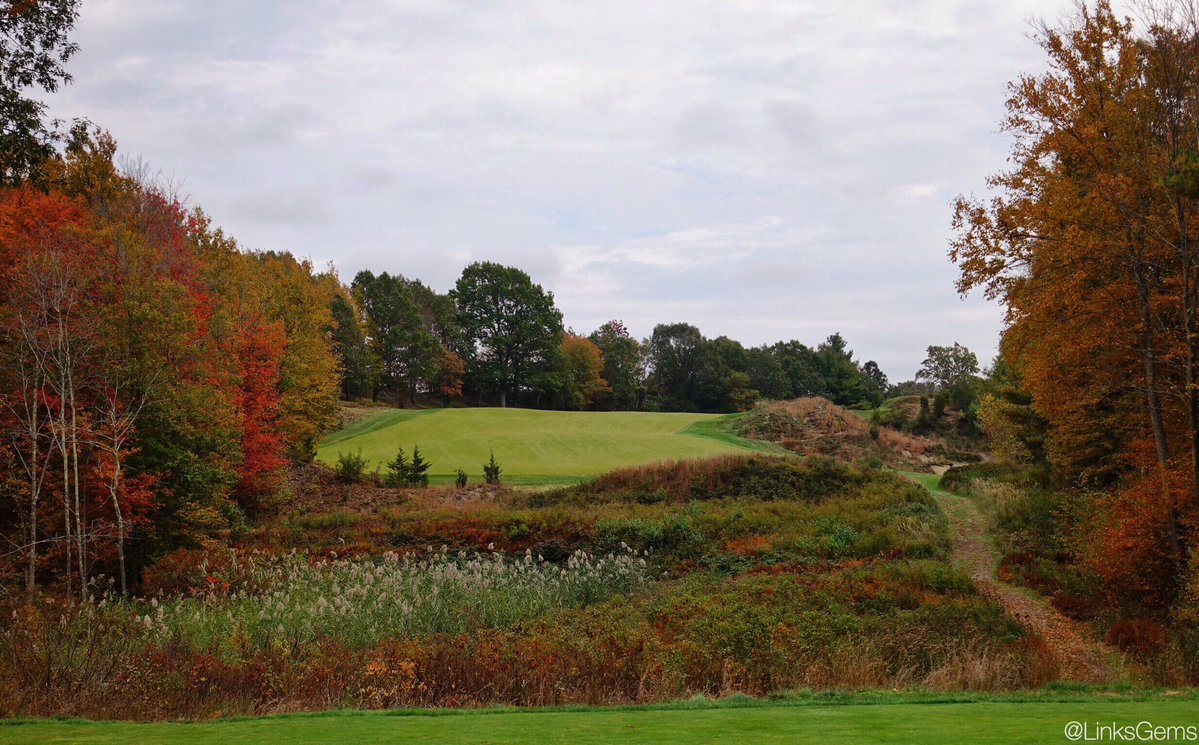
The tee shot at Boston Golf's 5th Photo Credit: Jon Cavalier
-
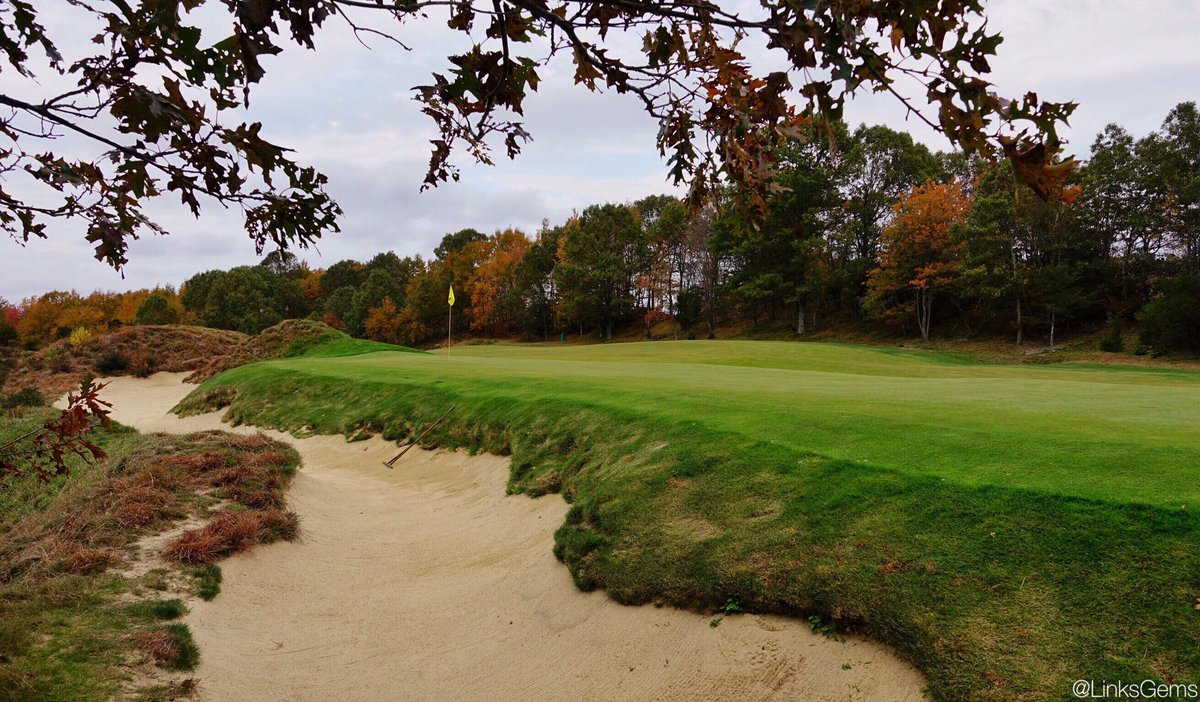
Photo Credit: Jon Cavalier
-
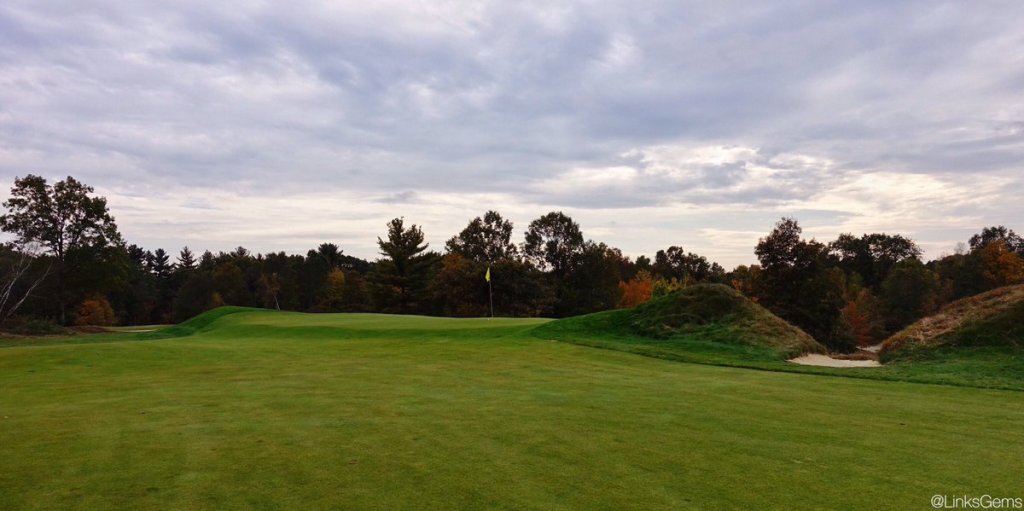
Photo Credit: Jon Cavalier


 by
by 